Matador Network's Blog, page 57
March 31, 2025
11 of the Best Food Festivals in the US to Start Planning For Now

For the traveling gourmand, the United States offers a smorgasbord of food festivals worth crossing state lines for. From the coasts to the mountains to the desert, the best US food festivals are a chance to discover new dishes, meet talented chefs, and learn new cooking techniques. They’re definitely food festivals WTF (worth traveling for) — though when you see some of the creative dishes on display, you may think “WTF” in the more traditional sense, too.
The best food festivals in the US are immersive experiences, ranging from enormous free festivals in urban parks to exclusive, high-end events where ticket costs can reach into the four figures. Some festivals highlight just one dish or ingredient, like New Mexico’s Green Chile Festival, while others offer a global spread at attendees’ fingertips. You can keep it elegant with a weekend in Aspen, or embrace the Midwestern spirit by participating in a cheese curd-eating contest in Wisconsin.
So pack your bags, book your Airbnb, and loosen your belt — these are the best US food festivals worth traveling for in 2025 and beyond.

Photo: Patrick L. Pyszka/City of Chicago
Dates: September 5-7, 2025Cost to attend: FreeWhere to stay: The 15 Coolest Airbnbs in ChicagoThe Taste of Chicago, known locally as “The Taste,” is the world’s largest food festival, held annually in Grant Park along Chicago’s beautiful lakefront. Since its inception in 1980, the event has grown from attracting 250,000 people to welcoming approximately 3 million hungry attendees each year. It showcases Chicago’s local specialties like deep-dish pizza, Chicago-style hot dogs, and Eli’s Cheesecake, plus international cuisines representing the city’s multicultural heritage. Beyond the food, visitors can enjoy free nightly concerts with A-list performers, join group dance parties and demonstrations, attend cooking classes, and relax in the festival’s expansive beer hall. Food tastings from vendors typically cost about $5.
South Beach Food and Wine Festival in MiamiRead more about Chi-Town’s food scene:
The 6 Best Outdoor Bars in Chicago8 Best Vegetarian and Vegan Places to Eat at in ChicagoThe Best Coffee Shops in Chicago Right Now10 Outstanding Chicago Hotels Within Walking Distance to Must-See Sights7 Essential Fine Dining Restaurants in Chicago

Photo: South Beach Wine & Food Festival
Dates: February 19-22, 2026Cost to attend: $40-$550, depending on eventWhere to stay: 12 Airbnbs in Miami Near the City’s Best Beaches and NeighborhoodsThere’s something undeniably appealing about escaping to Miami in the middle of winter, so the fact that it’s home each February to the “Foodie Super Bowl” is just icing on the cake. The South Beach Food and Wine Festival takes place just steps from the sugary white sand and is known for signature events like the “Burger Bash,” where attendees vote for their favorite burgers. The festival attracts more than 65,000 visitors annually for events that showcase the talents of over 500 chefs, along with dozens of culinary experts and celebrity guests. Highlights include walk-around tasting events, intimate dinners with Michelin-starred chefs, and themed experiences like “Noche Cubana,” featuring Cuban-inspired cuisine, cocktails, and salsa dancing. Most events are for adults 21 and older, though some daytime activities are family-friendly.
New Orleans Food and Wine ExperienceRead more about Miami’s food scene:
Where to Eat in Miami, According to Miami’s Best ChefsThe Best Miami Restaurants for Latin American FoodThe 24 Best Experiences to Have During Your First Trip to Miami8 Stunning Airbnbs in Miami Beach Close to Popular Beachside AmenitiesThe Duke and Dame Guide to Miami’s Best Restaurants and Bars, From Happy Hour to Sunrise
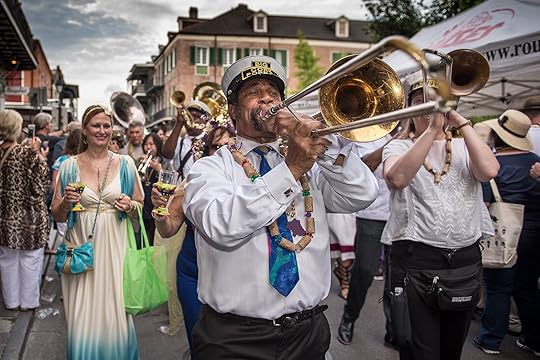
Photo: New Orleans Food & Wine Experience
Dates: June 12-15, 2025Cost to attend: $75-$1,000, depending on eventWhere to stay: 9 New Orleans Airbnbs Near the French QuarterThe Big Easy has no shortage of festivals, but the New Orleans Wine and Food Experience — now in its 33rd year — has become one of the most prestigious and well-known food festivals in the US. It attracts nearly 2,000 gourmands and wine connoisseurs from around the world who come to enjoy high-end activities celebrating the city’s gastronomic culture. The festival celebrates quintessential local dishes like crawfish étouffée, boudin sausages, beignets, and seafood gumbo, alongside international cuisines that reflect the city’s global food influences, which are some of the most varied in North America.
Beyond eating, visitors can attend the “Tournament of Rosés,” where guests dress to impress while sampling premier rosés, participate in interactive labs led by wine professionals and chefs, attend cooking demonstrations, and experience the “Burlesque, Bubbly and Brunch” event with bottomless sparkling wine and performances by renowned burlesque and burlesque-adjacent acts.

Photo: Rut Luecha/Shutterstock
Dates: October 5-6, 2025Cost to attend: $15-$120, depending on eventWhere to stay: 9 New Orleans Airbnbs Near the French QuarterIf the New Orleans Wine and Food Festival celebrates the elegance of food, the just-as-popular Fried Chicken Festival has more of an everyman feel. It’s affectionately known as FCF and is a two-day culinary celebration also held in picturesque New Orleans. It was founded in 2016 with the simple concept that “everybody loves fried chicken,” and now attracts more than 120,000 attendees per year.
During the festival, more than 40 restaurants from across the country compete to create innovative fried chicken dishes like macaroni-stuffed wings, chicken and funnel cake combinations, fried chicken cocktails, and chicken-shaped ice cream desserts with “skin” made from waffle bits. There’s also big-name entertainment, cooking demos, celebrity chefs, and a chicken wing eating contest, as well as a coveted people’s choice award for best wings.
Picklesburgh in Pittsburgh, PennsylvaniaRead more about the New Orleans food scene:
The Best Places to Eat and Shop in the French Market, New Orleans
The 10 Best Bars in New Orleans for Strong Drinks and Good TimesTo Understand New Orleans, Eat Like a ChefThe 11 Best Airbnbs in New Orleans for a Bachelorette Getaway

Photo: Pittsburgh Downtown Partnership/Renee Rosensteel and Emery Meyer
Dates: July 11-13, 2025Cost to attend: FreeWhere to stay: The 11 Coolest Airbnbs in Pittsburgh’s Trendiest NeighborhoodsIt’s easy to guess what food is held in highest regard at the Picklesburgh festival. It’s a celebration of all-things-pickled, attracting about 250,000 attendees each year. The blend of pickle-themed food, drinks, merchandise, and live music makes it a one of the best food festivals to travel to for anyone looking for a fun and quirky experience. Attendees can look forward to a variety of pickle-infused delights, including pickle-flavored beer and cocktails, pickle ice cream, and pickled foods like dilly beans and kimchi. There’s an annual pickle juice drinking competition (the winner is crowned the “Mayor of Picklesburgh”), a 35-foot-long Heinz pickle balloon towering over the festivities, and a kids area focused on pickle-shaped crafts.
Veggie Fest in ChicagoRead more about Pennsylvania’s food scene:
15 Breweries to Visit on Your First Trip to PhiladelphiaNo Trip to Philly Is Complete Without Trying These 10 Reading Terminal Market Food Stalls9 Restaurants That Show Off Philly’s Diversity, According to a James Beard-Nominated ChefThe 5 Best Cheesesteaks in PhiladelphiaExperience Pennsylvania’s Best Getaway Spots From These Gorgeous Airbnbs

Photo: Bogdan Sonjachnyj/Shutterstock
Dates: August 9-10, 2025Cost to attend: FreeWhere to stay: Exhale and Relax at These Cannabis-Friendly Airbnbs in ChicagoVeggie Fest started in 2005 with 500 guests and now attracts more than 50,000 people each year, making it the biggest vegetarian festival in the US. It celebrates both the vegan and veg lifestyle, as well as the general idea of trying to eat less meat and live slightly healthier. There’s an international food court with veggie dishes from around the world, workshops on meditation and sustainable living, speakers and cooking demos, classes on how to cook with meat substitutes, live music, complimentary yoga, and more. It caters to seasoned vegetarians, curious newcomers, and flexitarians. The festival is held just outside Chicago in a huge outdoor park in Lisle, and is accessible from the city on public transit.
Aspen Food and Wine Classic (Colorado)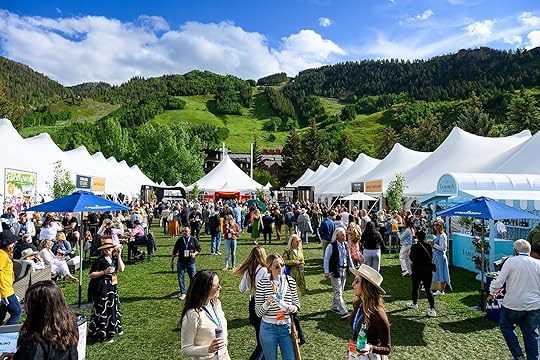
Photo: C2 Photography/Food & Wine
Dates: June 20-22, 2025Cost to attend: $2,950+Where to stay: 11 Aspen Airbnbs to take in the country’s most glamorous townThe Aspen Food and Wine Classic isn’t the only food and wine festival in a mountain town, but it may be the most exclusive. Annual attendance is limited to 4,000 people, with a ticket price of $2,950 person. It’s an extremely intimate and high-end experience where attendees can interact with world-renowned chefs, sommeliers, and industry experts. The festival includes more than 80 cooking demonstrations, wine seminars, panel discussions, and spirits tastings, all centered around the Grand Tasting Pavilion.
The festival has helped shape Aspen into a culinary destination beyond the festival dates, so you can have a fantastic meal no matter when you visit the town. If you’re there during the festival and don’t want to shell out for a ticket, some restaurants and shops in town hold their own unaffiliated events at the same time, so you’ll still find plenty of interesting menus. Try to make your dining reservations as far in advance as possible, as many restaurants sell out early or close for festival-specific events in the evenings.
Maine Lobster Festival in Rockland, MaineRead more about Colorado’s food scene:
The 10 Top Rated Restaurants in DenverThis Ritzy Aspen Hotel Is Famous for Its Personalized Butler ServiceThis Gorgeous Colorado Distillery Makes the First Single Pot Still Whiskey Outside of Ireland6 Bars That Prove Denver Is the Next Great Cocktail CityStunning Aspen Airbnbs to Take in the Country’s Most Glamorous Mountain Town
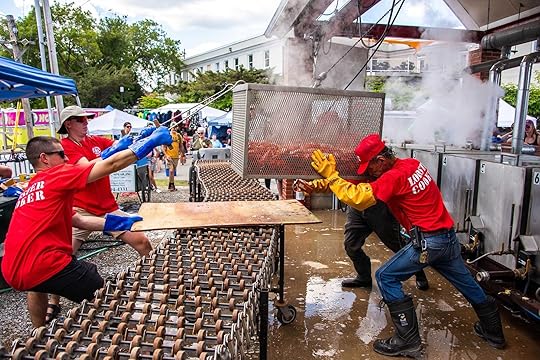
Photo: Maine Lobster Festival
Dates: July 30-August 3, 2025Cost to attend: Free to attend, but some activities have feesThe Maine Lobster Festival is a celebration of coastal culture — and the state’s most famous local crustacean. It spans five days of programming that are equal parts irreverent summertime festival and deep-rooted connection to the local community and state’s maritime heritage. One of the most unique features is the “Marine Experience Tent,” where visitors can interact with sea life, learn about marine ecosystems, connect with the source of their seafood, and get a better understanding of the importance of sustainable fishing practices.
If you’re attending, don’t miss the “International Great Crate Race,” where participants attempt to run across a string of lobster crates in Rockland Harbor. If you’re traveling with little kids in tow, you may want to enter them in (or at least take them to) the “Little Lobster Diaper Derby” crawling race. Of course, there’s also a seafood cooking contest, where chefs compete to create innovative lobster dishes.
The Maine Lobster Festival isn’t the biggest of the public US food festivals, but it’s one of the most fun, with a grassroots spirit that feels authentic to the culture of coastal Maine.
Ellsworth Cheese Curd Festival in Ellsworth, WisconsinRead more about Maine’s food scene:
Why Portland, Maine, Is the Ultimate Fall Food GetawayWhere to Eat in Maine Before Lobster Season Ends in DecemberMaine Has One of the Most Exciting Craft Beer Scenes in America. Here’s ProofTasting Maine: A Guide to the Local Food MovementThese Airbnbs in Portland, Maine, Showcase the Best of New England’s Coolest City

Photo: Cheese Curd Festival
Dates: June 27-28, 2025Cost to attend: Free to attend, but some activities have feesWhere to stay: ?The Ellsworth Cheese Curd Festival is an annual celebration of the town’s title as the “Cheese Curd Capital” of Wisconsin, as well as the whole state’s rich dairy heritage. It attracts about 30,000 attendees each year who come for the food, music, and Wisconsin community spirit. Naturally, the festival has plenty of creative cheese curd dishes to try, including fresh hand-battered and deep-fried curds, along with an exclusive dessert curd that rivals the mini donut. In past years, there have been more than 250 types of cheeses at the festival, plus local music acts on three stages ranging from folk to blues performances. There’s also a classic car show, a milk and cookie pairing, and ice cream tastings.
Of course, this is Wisconsin, and it’s known for something beyond dairy: beer. The festival includes the “Corks and Kegs” tasting event, where attendees can try local beer, wine, and hard cider, plus a “Craft and Curd” pairing event where attendees can judge local breweries’ perfect brew and cheese curd pairings. There’s a cheese curd eating contest, too, though you probably shouldn’t waste stomach space with those local beers if you’re trying to win.
Hatch Valley Chili Festival in Hatch, New MexicoRead more about Wisconsin’s food scene:
A Wisconsin Master Cheesemaker Explains How To Find the Best Cheese in the StateThe Real Story Behind Why Some Wisconsinites Eat Raw Meat Sandwiches Around the HolidaysThe Midwest Is Obsessed With Frozen Custard. Here’s Where to Try ItPickle Roll Ups Are Another Genius Culinary Innovation From the MidwestLive Your Best Lake Life at These Top-Rated Wisconsin Airbnbs

Photo: kenelamb photographics/Shutterstock
Dates: August 30-31, 2025Cost to attend: Free to attend, but some activities have feesWhere to stay: Where to Stay Near White Sands National ParkNew Mexico’s Hatch Chile Festival celebrates the region’s renowned green chile peppers, a staple of New Mexican cuisine. It’s held over Labor Day weekend each year and transforms the small town in a lively tourist and culinary hub. There’s a carnival with rides and games, live music, and a “Chile Queen” pageant. Visitors can sample various dishes featuring green chiles, from traditional roasted chiles to more innovative recipes. It’s also a great place to buy a variety of chile-themed products, including ristras (strings of dried chile peppers often used as decoration).
Hatch is known as the “Chile Capital of the World,” and visitors to the area can also visit chile farms and try local favorites like green chile burgers. It’s also close to plenty of outdoor attractions, including White Sands National Park, as well as everything from local wineries to hot springs.
Hawaiʻi Food and Wine FestivalRead more about New Mexico’s food scene:
These 9 Hotels in the US Are Worth Booking a Room for the Restaurants AloneOutdoor Dining in Santa Fe: 8 Top Patio RestaurantsThe Best Margaritas in the World Are in Santa Fe, NM. Here’s Proof9 Santa Fe Airbnbs That’ll Make New Mexico’s Capital Feel Like Home

Photo: Kirk Lee Aeder/Island of Hawaii Visitors Bureau
Dates: Oct. 17-Nov. 2, 2025Cost to attend: $295+Where to stay: 19 Dreamy Airbnbs in Hawai’i Just Steps from the BeachThe Hawaiʻi Food and Wine Festival (HFWF) is not just one of the best food festivals in the US, but also one of the most expansive, spanning across three islands. It was co-founded by James Beard Award-winning chefs and showcases the state’s culinary bounty. Using local ingredients isn’t just encouraged, but mandatory. Participating chefs are required to use at least one locally grown, raised, or caught ingredient in their dishes to help ensure the festival benefits Hawaii’s farmers, ranchers, and fishermen. Local producers also benefit by being event hosts, as many open their farms, ranches, and production facilities to visiting chefs and guests.
Events of the festival range from high-end tastings to kids’ cooking classes and approachable wine seminars. More than 150 master chefs, culinary personalities, sommeliers, and mixologists are expected to participate in some capacity in 2025. This year, the Big Island will host the festival October 17 and 18, Maui will host October 25 and 26, and things will wrap up in Oahu from October 30 to November 2. 
These Munich Airbnbs Put You Close to Everything in the City

Munich is a city in Germany with a lot to offer visitors. It is known for its architecture, museums, and annual festivals. One of the most famous is Oktoberfest, a huge beer festival held each fall. Munich is also home to many beautiful buildings, including Neuschwanstein Castle, Frauenkirche Cathedral, and New Town Hall. Art lovers will enjoy the Alte Pinakothek Museum, which houses many famous works. Overall, Munich is an attractive destination because of its cultural attractions, historical sites, and events. These Munich Airbnbs put you close to Oktoberfest and all the rest of the action.
Traveling to Europe? Check out Matador’s Europe accommodations gudies: These Greek Villas Make for a Unique and Cozy Stay in Athens 9 dreamy Airbnbs in the Greek islands 9 dreamiest Airbnbs in the South of France These Airbnbs Near the Eiffel Tower Offer Incredible Views of the Entire City 14 of the best Airbnbs in Barcelona 11 Best Airbnbs in Madrid, From a Luxury Penthouse To Artsy Apartments These Airbnbs in Ireland Showcase the Best of the Emerald Isle Stay like royalty at these Airbnb Ireland castle rentals These Vienna Airbnbs Showcase the Best of the Historic City Center
We hope you love the Airbnb Munich vacation rentals we recommend! Just so you know, Matador may collect a small commission from the links on this page if you decide to book a stay. Listed prices are accurate as of the time of publication.
Enormous Bavarian hideout 30 minutes outside the city center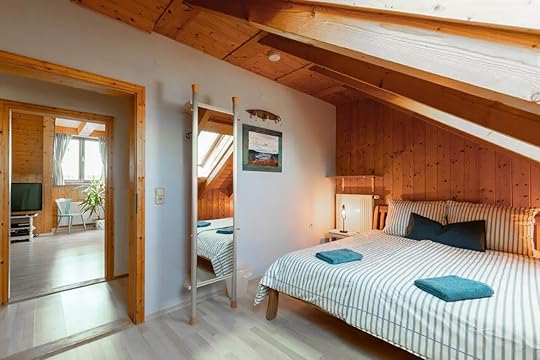 Photo: Airbnb
Photo: Airbnb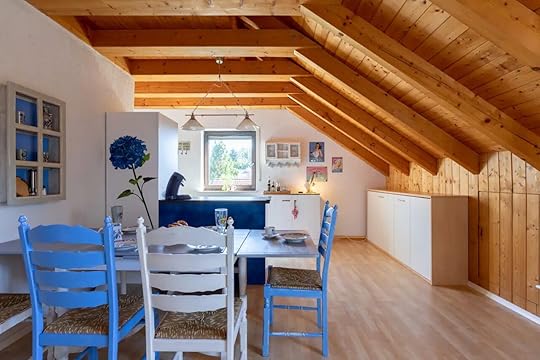 Photo: Airbnb
Photo: Airbnb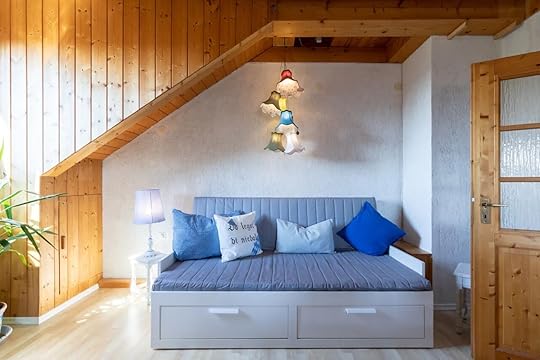 Photo: Airbnb
Photo: Airbnb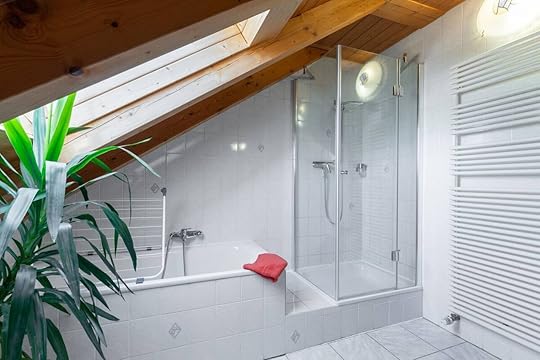 Photo: Airbnb
Photo: Airbnb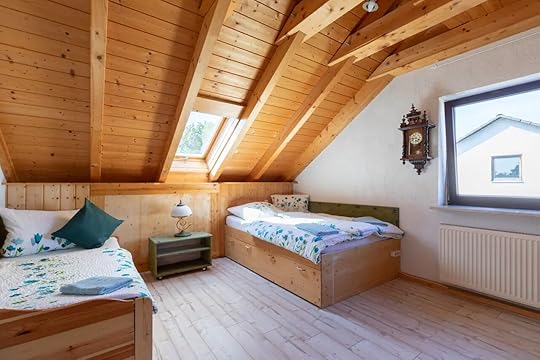 Photo: Airbnb
Photo: AirbnbSee more photosThis “Bavarian Hideout” is about 30 minutes outside of the downtown chaos but close enough to enjoy exploring the city while having a quiet home base to return to. Homey shades of blue and light brown woods make this spot feel like a sunny mountain hideaway in the city. Inside, this top-floor apartment features two bedrooms and a full kitchen with all the standard cooking appliances, including dishes, an electric kettle, microwave, coffee machine, fridge, dishwasher and an electric stove and oven. In the living room, video game enthusiasts will love the 43-inch TV hooked up to a PlayStation 4 Pro. Outside, there’s a private backyard space to soak up some sunshine and a few minutes away, there’s a beautiful lake.
Eight guests, two bedrooms
Price: $219 per night
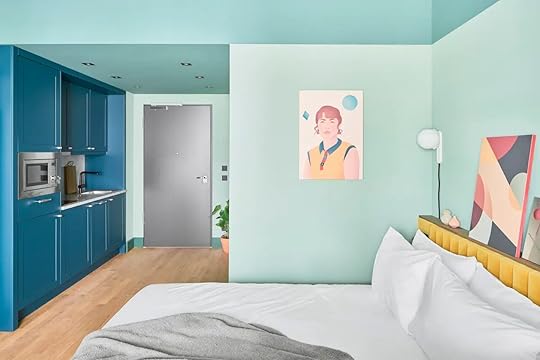 Photo: Airbnb
Photo: Airbnb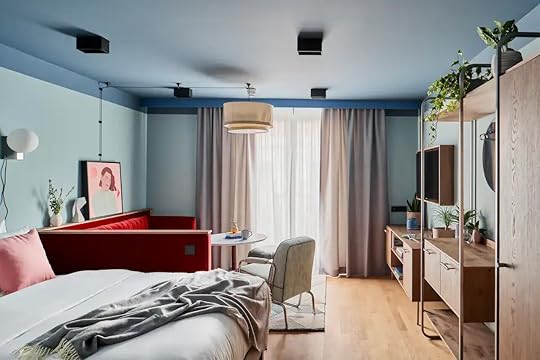 Photo: Airbnb
Photo: Airbnb Photo: Airbnb
Photo: Airbnb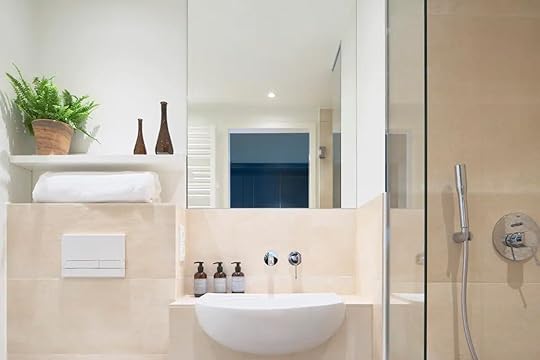 Photo: Airbnb
Photo: AirbnbSee more photosThis newly renovated mid-century-inspired apartment emits a sense of creativity and community. There’s a fully-equipped kitchen, floor-to-ceiling windows to let in plenty of light, curated art and even a “Welcome Kit” full of goodies upon check-in. Vibrant colors in the furniture and decor make the apartment feel youthful and spirited, and the abundance of greenery and plants adds an element of life to the space.
Two guests, one bedroom
Price: $192 per night
 Photo: Airbnb
Photo: Airbnb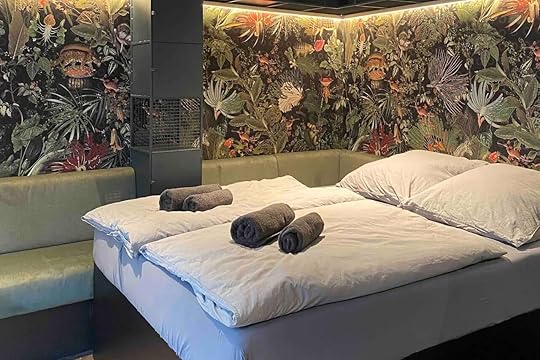 Photo: Airbnb
Photo: Airbnb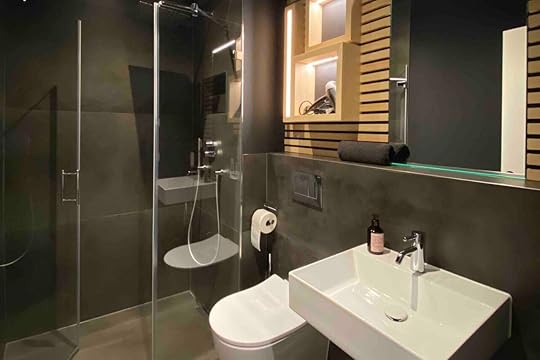 Photo: Airbnb
Photo: Airbnb Photo: Airbnb
Photo: AirbnbSee more photosThis trendy, industrial-style ground-floor loft features a living-dining room area with a bar and an open kitchen — making it feel spacious. There are four bedrooms (one with a dedicated sports area) as well as a dedicated working area and a fitness area with upscale equipment. Darker design elements like black fixtures mix with the green paint tones, chairs and plants — giving the apartment a sense of life. Outside, you’ll enjoy direct access to the serene private courtyard space — a great place to get fresh air.
Nine guests, four bedrooms
Price: $576 per night
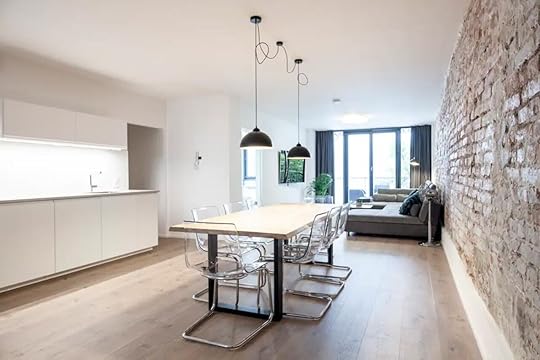 Photo: Airbnb
Photo: Airbnb Photo: Airbnb
Photo: Airbnb Photo: Airbnb
Photo: Airbnb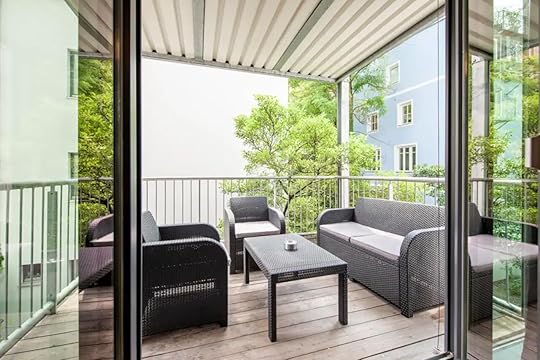 Photo: Airbnb
Photo: AirbnbSee more photosThis quiet, newly renovated, stylish three-bedroom apartment is just a 5-minute walk to the nearest S-Bahn station. There’s a well-appointed open kitchen adjoining the large living room area and dining area and a big sofa in front of the TV — perfect for getting cozy. Walk out the French doors from the living room and step onto the balcony with lounge seating and fresh air. White walls and elements of exposed brick make this space feel clean but homey.
Seven guests, three bedrooms
Price: $602 per night
 Photo: Airbnb
Photo: Airbnb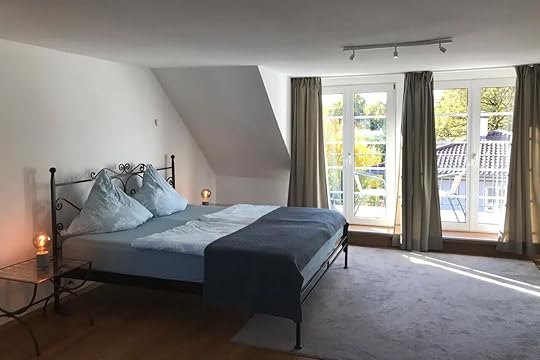 Photo: Airbnb
Photo: Airbnb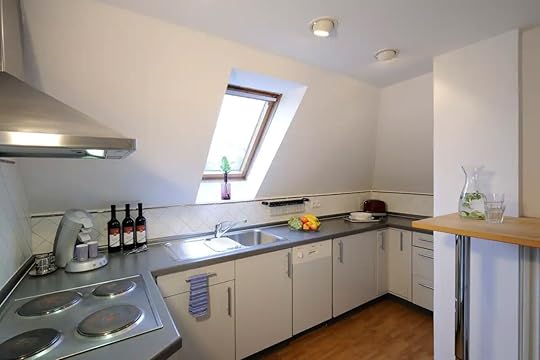 Photo: Airbnb
Photo: Airbnb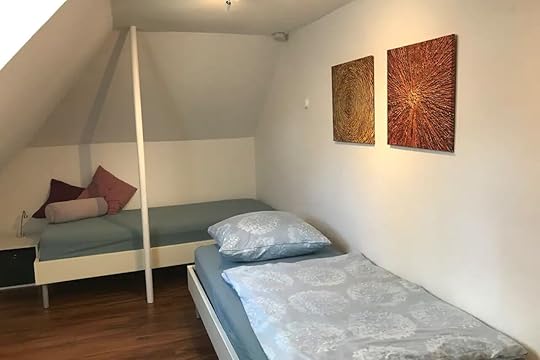 Photo: Airbnb
Photo: AirbnbSee more photosThe very clean, airy, and thoughtfully designed apartment is in a newly renovated residential and commercial building in a quiet residential area in Munich East. It offers travelers a safe and spacious resting place after exploring the bustling city nearby). It features a spacious balcony, a full kitchen, a living room with a double bed, a dining area, and a separate bedroom with two beds.
Four guests, one bedroom
Price: $112 per night
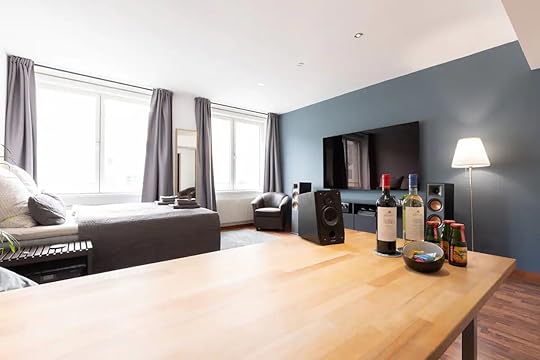 Photo: Airbnb
Photo: Airbnb Photo: Airbnb
Photo: Airbnb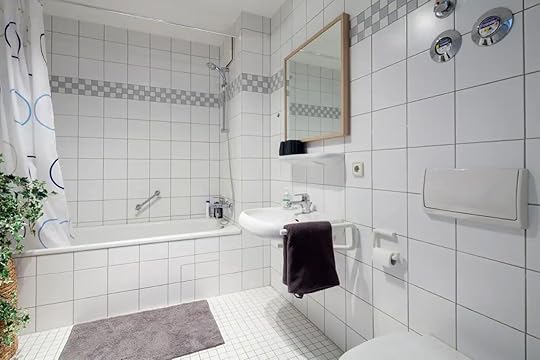 Photo: Airbnb
Photo: Airbnb Photo: Airbnb
Photo: AirbnbSee more photosThis chic, monochromatic apartment sits in a beautiful spot right in the heart of Munich, just steps from Marienplatz. It features a fully equipped kitchen with a stove, fridge, freezer and dishwasher, and blender. Sleep on the new, comfortable queen-size boxspring bed or work at the large desk area. Relax on the couch in front of the TV and stream a movie. It’s a clean, conveniently located place to plan a Munich adventure.
Two guests, one bedroom
Price: $283 per night
 Photo: Airbnb
Photo: Airbnb Photo: Airbnb
Photo: Airbnb Photo: Airbnb
Photo: Airbnb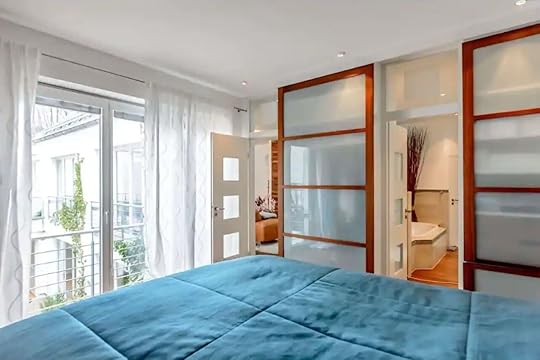 Photo: Airbnb
Photo: AirbnbSee more photosThe luxurious, pet-friendly, bright loft roof terrace apartment is located in the Gärtnerplatz district. It feels like a secluded spot to stay in the heart of Munich, within walking distance of the Isar and the Viktualienmarkt. Enjoy using the fully equipped kitchen, and eat in the dining room, which boasts high-end furniture or lounge on the leather couch in front of the fireplace in the living room. There’s a King sized bed in one of the bedrooms, and a sofa bed in the other, meaning it’s a great place for four people to spend a night in Munich.
Four guests, one bedroom
Price: $263 per night
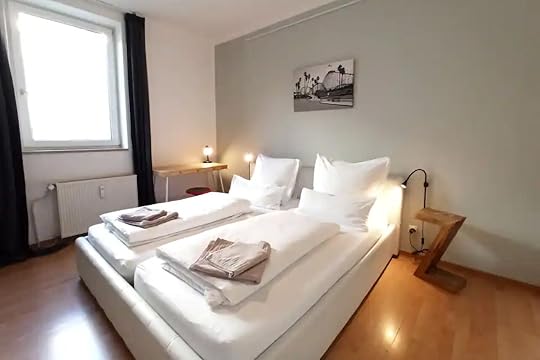 Photo: Airbnb
Photo: Airbnb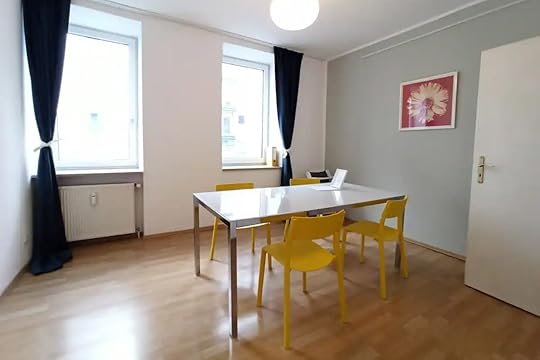 Photo: Airbnb
Photo: Airbnb Photo: Airbnb
Photo: Airbnb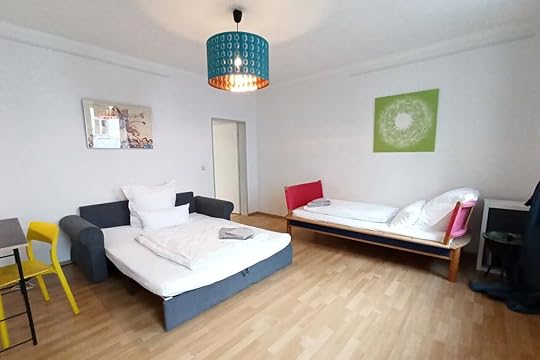 Photo: Airbnb
Photo: AirbnbSee more photosShades of white and vibrant pops of color in the decor give this clean, modern apartment character and make it a fun place to spend the night on a trip to Munich. There’s a kitchen, a balcony, and two bedrooms to rest. It’s also just a 5-minute walk to the train station meaning easy access to exploring the city.
Four guests, two bedrooms
Price: $153 per night
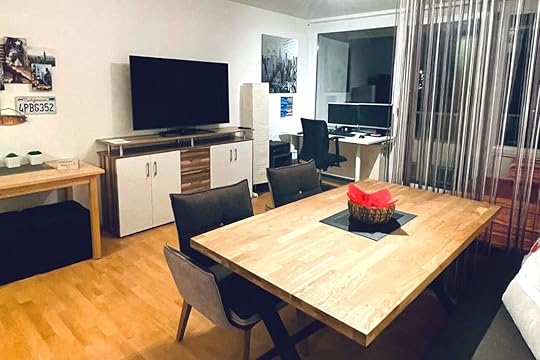 Photo: Airbnb
Photo: Airbnb Photo: Airbnb
Photo: Airbnb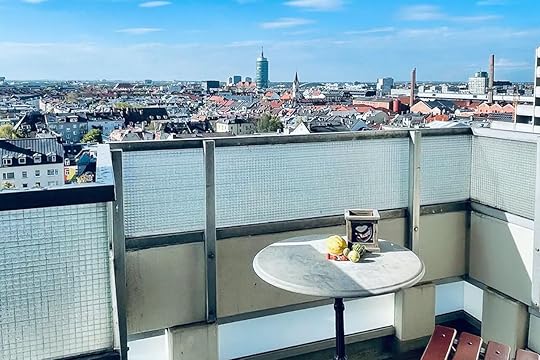 Photo: Airbnb
Photo: AirbnbSee more photosThis sunny, cozy apartment sits on the eighth floor and boasts a balcony with a table and chairs overlooking the city sights. It’s centrally located — just a 15-minute walk to Munich Inner City and a single Metro Station away from Munich Central Station. Inside, guests will find a large bedroom for resting, a dedicated workspace, and a separate dining space alongside a kitchenette for cooking. Outside, the apartments’ best feature may just be this spectacular balcony with views of Munich.
Three guests, one bedroom
Price: $140 per night
 Photo: Airbnb
Photo: Airbnb Photo: Airbnb
Photo: Airbnb Photo: Airbnb
Photo: Airbnb Photo: Airbnb
Photo: AirbnbSee more photosThis stylish, air-conditioned studio apartment is located right in the heart of Munich, in a popular residential area between Munich Main Station and the Oktoberfest area. Inside, guests can enjoy sinking into a cozy queen-size double bed for two or a sofa bed after a long day of adventures. Use the added amenities, including a washing machine, a kitchenette, and a smart TV. Outside, there’s a balcony for getting some fresh air and easy access to exploring the city, as this spot is close to downtown and the train station.
Two guests, one bedroom
Price: $433 per night
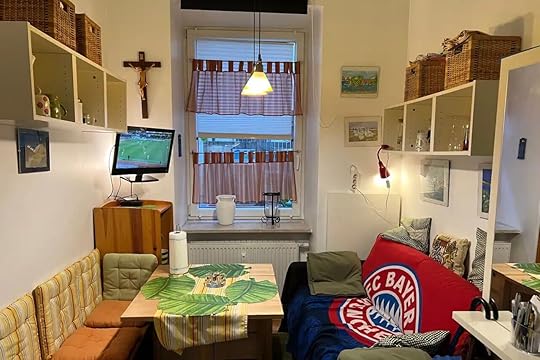 Photo: Airbnb
Photo: Airbnb Photo: Airbnb
Photo: Airbnb Photo: Airbnb
Photo: Airbnb Photo: Airbnb
Photo: AirbnbSee more photosThis compact, bohemian apartment is great for couples or solo adventurers to spend the night — and it’s pet-friendly. It’s just minutes from Viktualienmarkt, Marienplatz and the German Museum. There’s a kitchen and a dining area, a living area with a sofa bed underneath another bunk bed, and a bathroom.
Two guests, one bedroom
Price: $115 per night
 Photo: Airbnb
Photo: Airbnb Photo: Airbnb
Photo: Airbnb Photo: Airbnb
Photo: Airbnb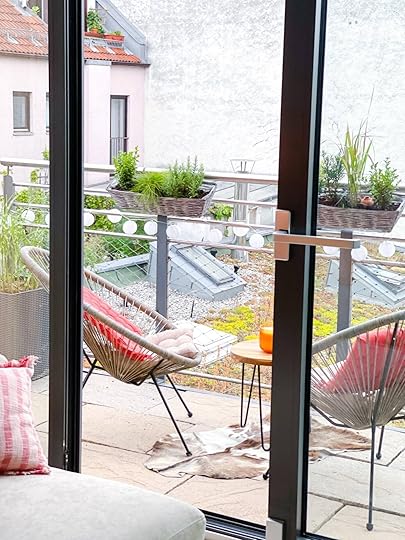 Photo: Airbnb
Photo: AirbnbSee more photos
Boasting expansive rooftop terraces, this is the spot to revel in panoramic city views. The interior seamlessly blends modern design with cozy comforts, featuring high ceilings, sleek furnishings, and abundant natural light that is much easier to adapt to than bright interior lighting. With a fully equipped kitchen, spacious living areas, and plush bedrooms, it’s a good spot to post up and take in the city — maybe even spend a night in.
Situated in a prime location, guests have effortless access to Munich’s cultural and historical attractions. A leisurely stroll from the unit leads to iconic landmarks, bustling markets, and an array of dining options that showcase the city’s renowned culinary scene — no car (and no stress) necessary.
Two guests, one bedroom
Price: $162 per night
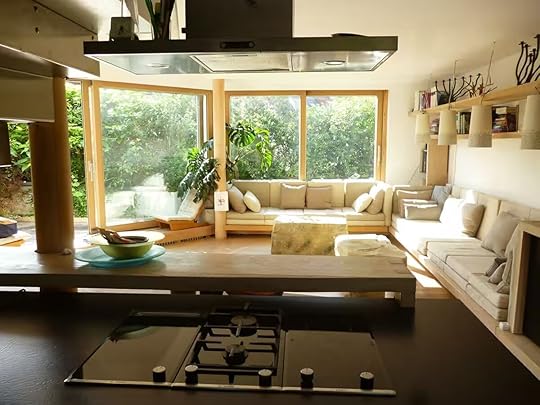 Photo: Airbnb
Photo: Airbnb Photo: Airbnb
Photo: Airbnb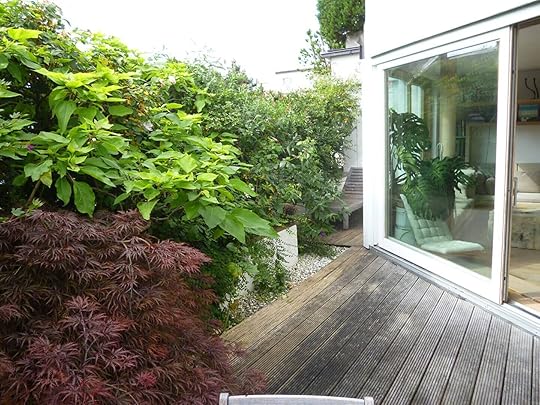 Photo: Airbnb
Photo: Airbnb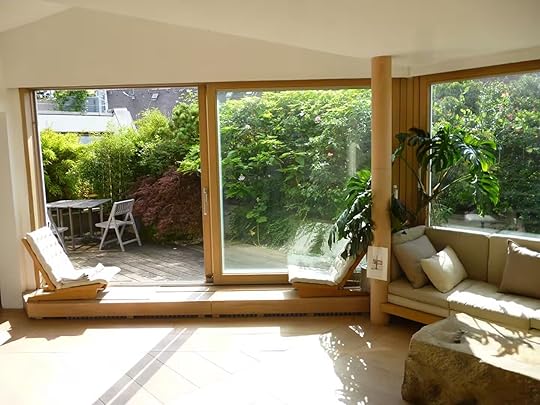 Photo: Airbnb
Photo: AirbnbSee more photos
Located in the heart of Munich, the Sunny City Loft offers a spacious and modern retreat for travelers seeking both comfort and convenience. This stylish loft features high ceilings and large windows that flood the space with natural light, creating an inviting atmosphere. The open-plan living area is thoughtfully designed with contemporary furnishings, providing a perfect setting to relax after a day of exploring the city. The fully equipped kitchen allows guests to prepare meals with ease, adding a touch of home-like comfort to their stay.
One of the standout features of this loft is its two expansive terraces with panoramic views of Munich’s skyline. These outdoor spaces are ideal for enjoying morning coffee or unwinding with a glass of wine in the evening. You’ll be within walking distance of attractions, restaurants, and public transportation.
Two guests, one bedroom
Price: $171 per night
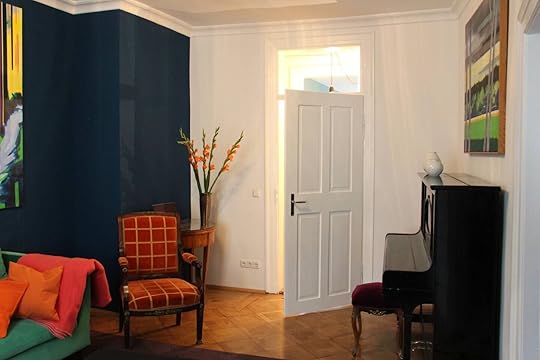 Photo: Airbnb
Photo: Airbnb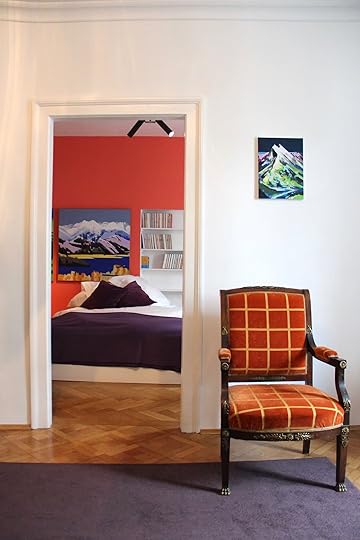 Photo: Airbnb
Photo: Airbnb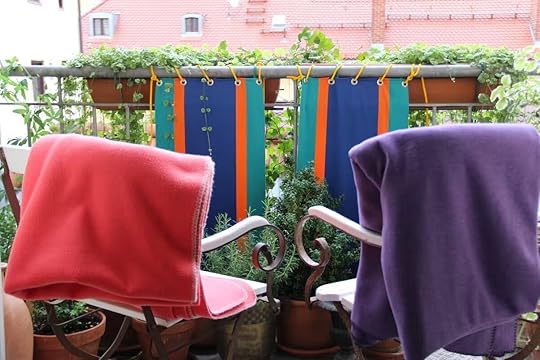 Photo: Airbnb
Photo: AirbnbSee more photos
Located in Munich’s vibrant city center, this spacious apartment offers an ideal retreat for families seeking both comfort and convenience. The thoughtfully designed interior features multiple bedrooms, providing ample space for relaxation after a day of exploring the city’s rich cultural offerings. A fully equipped kitchen means you can cook for your crew while they lounge over drinks in the parlor (and the next night, someone else cooks).
Beyond the apartment, its prime location places guests within easy reach of Munich’s renowned attractions. There are a slew of nearby parks, world-class museums, at popular local restaurants offering traditional Bavarian cuisine. With public transportation options just steps away, exploring the broader city makes this apartment an excellent choice.
Four guests, two bedrooms
Price: $293 per night
 Photo: Airbnb
Photo: Airbnb Photo: Airbnb
Photo: Airbnb Photo: Airbnb
Photo: Airbnb Photo: Airbnb
Photo: AirbnbSee more photos
Located in the heart of Munich, TheGallery is among the most sophisticated and comfortable Airbnbs in Munich. This modern apartment features contemporary furnishings and an open-plan living area that creates a spacious and inviting atmosphere. Large windows allow natural light to flood the space, enhancing the sleek design elements. The fully equipped kitchen provides the convenience of home-cooked meals, while the cozy bedroom ensures a restful night’s sleep.
TheGallery’s prime location places guests within easy reach of the city center — and that means beer, great food, and cultural sites galore. A short stroll leads to cultural landmarks, bustling markets, and an array of dining options that showcase the city’s culinary diversity. Leave the rental car at the airport — the city has excellent public transportation which from this apartment links all the stuff you want to see.
Eight guests, three bedrooms
Price: $684 per night
Yes! It’s legal, and plenty of visitors use Airbnb to visit Munich. In many cases Munich Airbnbs are more affordable and offer a more authentic experience than staying in a hotel.
What is the German version of Airbnb?A few alternatives to Airbnb in Germany include “9flats,” which, similarly to Airbnb, acts as an online marketplace for people to lease or rent short-term lodging.
How much is the rent in Munich?The average cost of rent for a one-bedroom apartment in the City Centre of Munich is roughly 1,334 Euros per month – equivalent to about 1,459 U.S. dollars per month. 
March 28, 2025
The Ultimate Guide to Stargazing in the United States
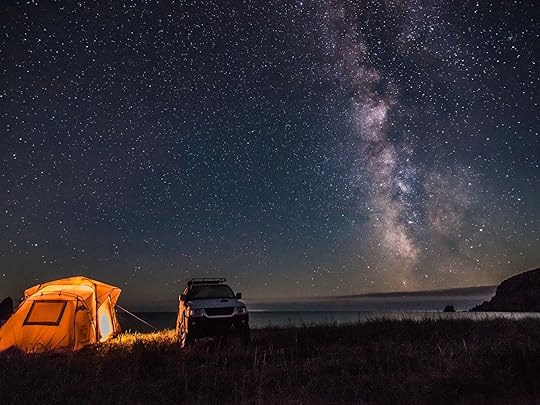 The Ultimate Guide to Stargazing in the United StatesPhoto: Yury Stroykin/Shutterstock
The Ultimate Guide to Stargazing in the United StatesPhoto: Yury Stroykin/ShutterstockLooking up at a star-studded sky is something special. Regardless of whether you’re a dedicated astronomer or you simply enjoy getting out to a dark sky location, the United States provides a wealth of stargazing opportunities for all. That is, if the weather complies. But having favorable conditions is astronomy 101. There’s a host of other factors to consider if you want to elevate your night sky adventures. The stargazing event calendar, maps, location and accommodation guides, and expert advice here will help you plan your exploration of the Milky Way.
Mapped: 60-plus Dark Sky Parks Across the United States
You need a pitch-black sky to admire the stars in their fullest. Locations certified by the International Dark Sky Association are some of the best places to avoid light pollution.
VisitThe Best Stargazing Event to Put on Your Calendar in 2025
These are all worth traveling for.
VisitUnique Stargazing ExperiencesPhoto: Parilov/Shutterstock
With optimal conditions, some basic gear, and an astronomy app, you’ll be able to enjoy the night sky at your leisure. There are, however, plenty of exciting ways you can elevate your experience by learning from experts, attending special calendar events, and signing up for astronomy-related activities and tours.
Stargazing and Surreal Architecture Come Together at This Gaudí-Inspired Colorado Airbnb
Here’s the scoop on where, when, and how to watch the total solar eclipse in the US — and why you don’t want to miss this otherworldly sight.
VisitThese Cruises Highlight Eclipses, the Northern Lights, and the Milky Way
In the middle of the ocean, the chances of street lights ruining your stargazing experience are very thin. That’s why cruise lines are ramping up their astronomy at sea offerings, including Northern Lights cruises, solar eclipse cruises, and more.
VisitWhat It’s Like to Take a Cross-country Astrophotography Odyssey by Van
Astrophotographer Anthony DeSantis discusses his vanlife stargazing trip across the US after he packed up his life to follow his passion.
VisitThe Coolest Star Observatories You Can Visit in the United States
Across the US, observatories have fueled some of the most important astronomical discoveries of the last century. This map of the best observatories you can visit features locations with educational programs and outstanding stargazing facilities.
VisitWhere to See the Northern Lights in the Continental United States
You don’t have to go to Alaska or even leave the country to see the Northern Lights in the US.
VisitThe Top Astronomy and Stargazing Tours Around the World
Get out of the city away from light pollution and join one of these bucket-list adventures. From one-day excursions to multi-day explorations, these are not your traditional stargazing tours.
VisitEverything You Need to Know About Night Sky Photography
Astrophotographer Jason Barnette explains everything you need to know about photographing the night sky. Barnette covers the best equipment and editing techniques, as well as how to plan an astrophotography shoot to capture the stars, nightscapes, and star trails.
The 7 Best Stargazing and Astronomy AppsThe best apps for stargazing bring the planetarium to you. Nearly all stargazing apps use augmented reality and your phone camera to show you in real-time what stars, constellations, planets, and more are in the sky above you. Just point your phone at the sky and the collective human knowledge gained over thousands of years of studying the sky is at your fingertips.
The Definitive Stargazing Gear GuideStargazing can be so much more rewarding with some key pieces of equipment. But you don’t need to spend a fortune on the basics if you know what’s best for its value, design, quality, ease of use, and durability. From binoculars to telescopes and red lights to stargazing tents, coming prepared with the right gear will set you up for success.
How to Take a Stargazing Road Trip Through CaliforniaPlanning a road trip around stargazing spots is an excellent way to explore a region. As most dark sky locations are in areas with little light pollution, you might find the route takes you through off-the-beaten-track places. California is the perfect state to do so (though Colorado gives the state a run for its money). These are the many locations where you can sit down and gaze up at the cosmos, stay in exceptional hotels with astronomy experiences, and set up in a dark sky camping spot.
Where to Stay in Dark Sky Certified DestinationsPhoto: Stas Tolstnev/ShutterstockThere are incredible Airbnbs and luxury hotels scattered across the US that fully embrace the natural surroundings. These stays cater to the astro-tourism market with exceptional locations under pristine night skies. Opting for an overnight stopover during an astronomy trip means you can enjoy the universe from the comfort of your accommodation and at your own pace. These immersive accommodations are perfect for every budding stargazer whether they want to stay in family-friendly houses with glass roofs, cozy dark sky park cabins, light-pollution-free campsites, or opulent outdoor retreats with a roster of astronomy-themed on-site activities.
These Airbnbs are Perfect for Budding Astronomers
Wish upon a star that one of these stargazing Airbnbs is available for your next trip.
VisitThe Best Campgrounds in the US for Stargazing
There’s a lot of excellent campgrounds to choose from in the US. These are some of the best in dark sky locations.
VisitLuxury Hotels Where Stays Come With Astronomy Experiences
This is a case where you get what you pay for, including suites with outdoor stargazing beds and a hotel with an on-site observatory.
VisitThe Best Airbnbs in the Dark Sky Zones Across the US
Stargazing is better when you stay overnight at one of these stunning Airbnbs.
VisitWatch the Stars From Bed in One of These Glass Roofed Airbnbs
Specifically designed for night sky enthusiasts.
VisitUtah is Home to Some of the Top Dark Sky Airbnbs in the World
Utah offers the perfect recipe for dark sky viewing: high altitude, dry weather, low population, and Airbnbs away from urban areas.
VisitFind Your Perfect Dark Sky DestinationThese US National Parks Have World-class Stargazing Programs
When the sun goes down in our national parks, the fun does not stop. The work the National Park Service has done to protect the night environment is astronomical. Throughout the year, the parks celebrate this through a robust calendar of events. With star parties, ranger-led astronomy talks, guided stargazing tours, Junior Ranger programs, and festivals, there’s simply a lot going on that you can plan your trip around.
How to Go Stargazing in Joshua Tree National ParkJoshua Tree National Park and the surrounding desert is one of the best places in California to enjoy the night sky. The entire park is really one gigantic stargazing spot, but if you want to do a Joshua Tree stargazing trip like a pro, all you need is some basic information to make sure you make the best of your (night)time in the stunning desert expanse.
A Photographer Captured Joshua Tree’s Night Sky Like You’ve Never Seen ItEnjoy a beautiful time-lapse from SKYGLOW, a project that explores North America’s remaining magnificent night skies and documents the increasing urban light pollution in our cities. In alliance with the International Dark-Sky Association, SKYGLOW showcases what our night sky could look like without the interference of artificial light.
CREDITSEditorial leadKatie Scott Aiton
ContributorsEben Diskin, Hannah D. Cooper, Jason Barnette, Kara Williams, Morgane Croissant, Nickolaus Hines, and Suzie Dundas
Special ThanksDebbie Gonzalez Canada
Ryan Dury
The Most Convenient Cardiff Airbnbs For an Easy Stay

Cardiff may be one of the smallest capitals in Europe but that’s not to say you can’t easily pad out a week (or longer) with fun activities. Beyond the emblematic castle, the city center is awash with museums, shopping arcades, and pubs while there’s a music joint on every corner. BBC Cymru tours take you behind the scenes of the United Kingdom’s historic broadcaster and nothing beats the thrill of scoring tickets to cheer on the national rugby team. Idle down to the docks where you’ll find hair-raising speedboat trips and grandiose stage shows at the Millennium Center – Cardiff’s answer to the Sydney Opera House.
This compact urban center is a doddle to explore on foot whereas Bannau Brycheiniog National Park and Barry Island make for a great day trip. These are the best Airbnbs in Cardiff for couples, large groups, and families seeking a mix of everything the city has to offer.
Traveling to the United Kingdom? Check out Matador’s UK accommodations guides: The Best Airbnbs in Manchester, From a Luxury Yacht To a Renovated Bank Vault 23 Airbnbs in London’s Trendiest Neighborhoods Top 13 Airbnbs for Exploring the Whole of Scotland The Most Convenient Hotels To Experience Manchester, England The 8 Best Hotels in Edinburgh Close To the Must-See Sights The Top Glasgow Airbnbs Across the City’s Coolest Neighborhoods
We hope you love these Airbnb Cardiff vacation rentals! Just so you know, Matador may collect a small commission from the links on this page if you decide to book a stay. Listed prices are accurate as of the time of publication.
Urban oasis steps from the city center Photo: Airbnb
Photo: Airbnb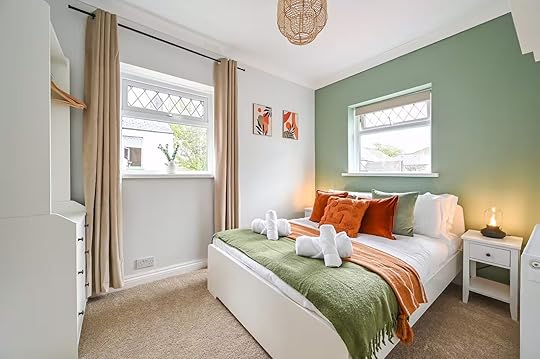 Photo: Airbnb
Photo: Airbnb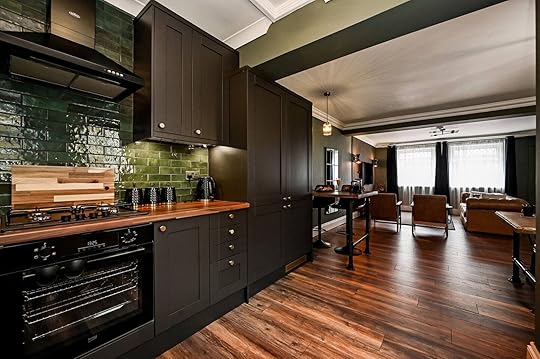 Photo: Airbnb
Photo: Airbnb Photo: Airbnb
Photo: AirbnbSee more photosEmerald tiles, sage walls, and gold accents create a sophisticated environment at this beautiful three-bedroom townhouse. The open-plan living room carries an olde-worlde aesthetic whereas the bedrooms are lovely and bright. There is one family bathroom on the second floor and a private patio out back where you can take your time over leisurely breakfasts and evening beers. Cardiff’s main attractions are a short walk away and there is free parking for a rental.
Six guests, three bedrooms
Price: $380 per night
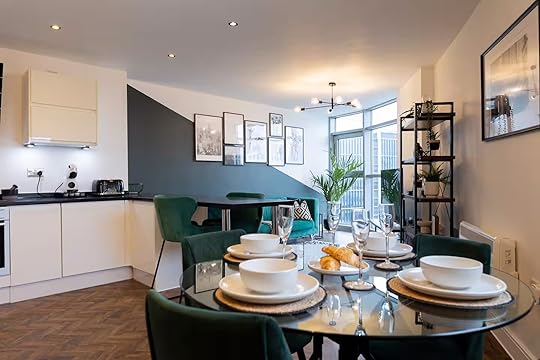 Photo: Airbnb
Photo: Airbnb Photo: Airbnb
Photo: Airbnb Photo: Airbnb
Photo: Airbnb Photo: Airbnb
Photo: AirbnbSee more photosThis central apartment rental immerses you in Cardiff’s cultural attractions and non-stop nightlife. The space is smartly dressed with a velvet couch and photographic art plus floor-to-ceiling windows peering over the city streets. With a fully-equipped kitchen, this is a solid choice for a weekend away or a longer stay in South Wales – and the free parking space comes in handy for those planning on hitting the national park or castle trail.
Four guests, two bedrooms
Price: $291 per night
 Photo: Airbnb
Photo: Airbnb Photo: Airbnb
Photo: Airbnb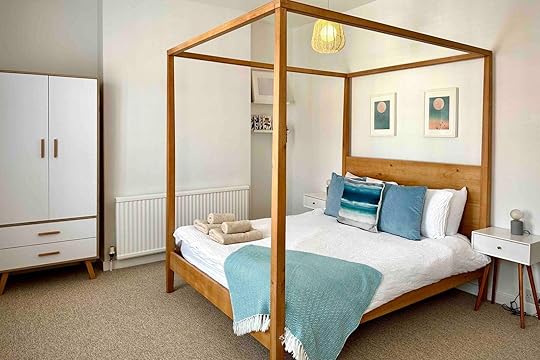 Photo: Airbnb
Photo: Airbnb Photo: Airbnb
Photo: AirbnbSee more photosIdeal for family vacations in Wales, this three-bedroom house has a private courtyard garden and free street parking. The host can provide a crib and highchair along with any other infant essentials. This historic abode has been modernized with a fitted kitchen, oval soaking tub, and ultra-comfy beds. It’s a 10-minute walk to the city center and even closer to the cycling trails traversing the River Taff – bringing a bike to Taffs Mead House is highly recommended.
Six guests, three bedrooms
Price: $386 per night
 Photo: Airbnb
Photo: Airbnb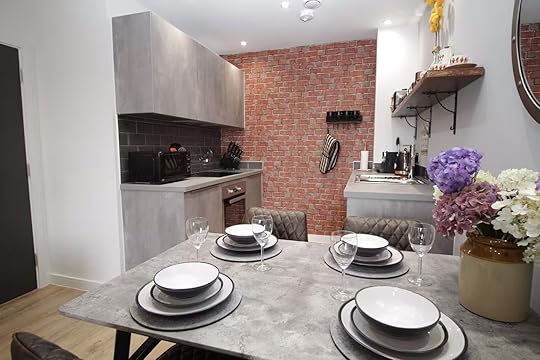 Photo: Airbnb
Photo: Airbnb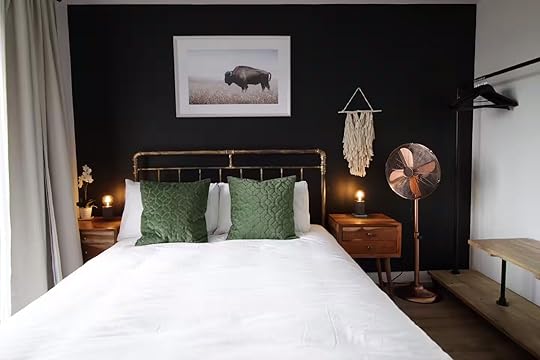 Photo: Airbnb
Photo: Airbnb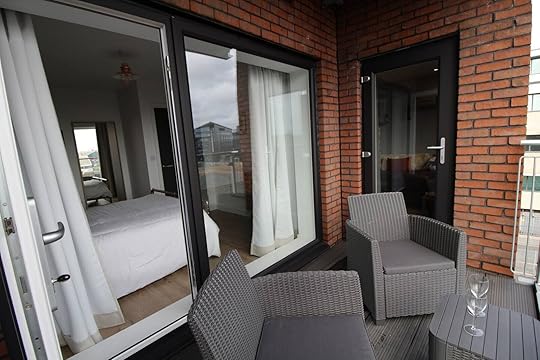 Photo: Airbnb
Photo: AirbnbSee more photosThis one-bedroom flat near Cardiff Central has everything necessary for a comfortable stay and is particularly suited to a solo traveler or couple although the sofa doubles up as a spare bed. The warehouse-inspired space is nicely turned out with kooky finds and unfurls into a small balcony perfect for plotting a day out in the most underrated capital in the United Kingdom. The location can’t be beaten; the city center and Principality Stadium are a five-minute walk whereas Cardiff Docks are a short bus ride or Uber away.
Four guests, one bedroom
Price: $155 per night
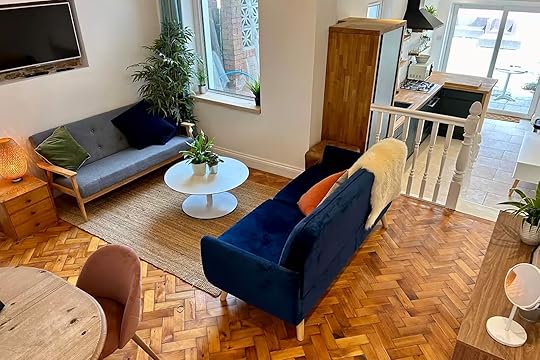 Photo: Airbnb
Photo: Airbnb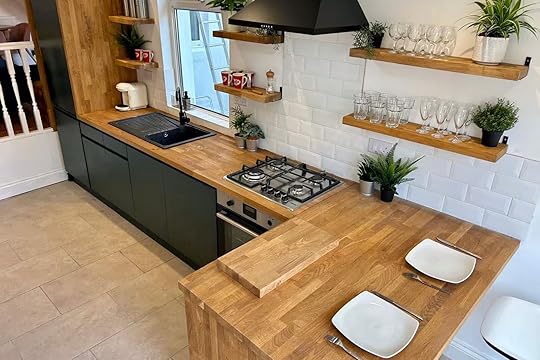 Photo: Airbnb
Photo: Airbnb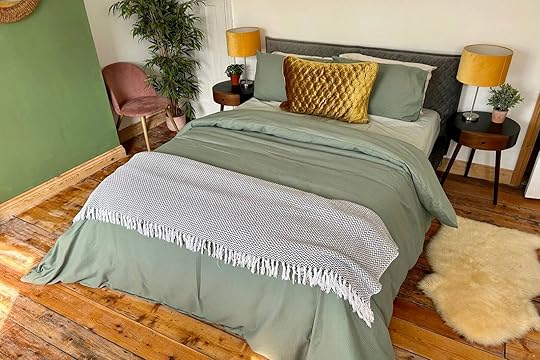 Photo: Airbnb
Photo: Airbnb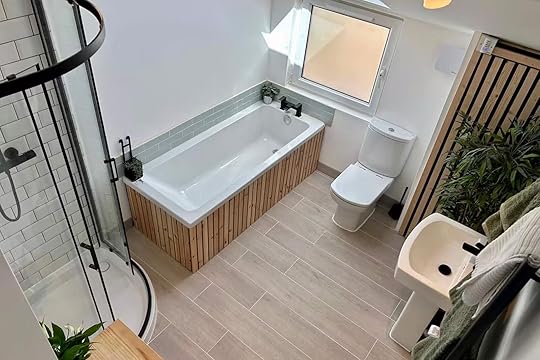 Photo: Airbnb
Photo: AirbnbSee more photosHeading to Cardiff for a gig or to watch the Six Nations? This fetching townhome is a stone’s throw from the stomping ground of the Welsh national rugby union team whereas music venues such as the Tramshed are also within walking distance. The house itself is located in a calm, residential enclave popular with young professionals and families. Besides the spotless kitchen and chic bathroom, you’ll find a sunny lawn out the back.
Six guests, three bedrooms
Price: $280 per night
 Photo: Airbnb
Photo: Airbnb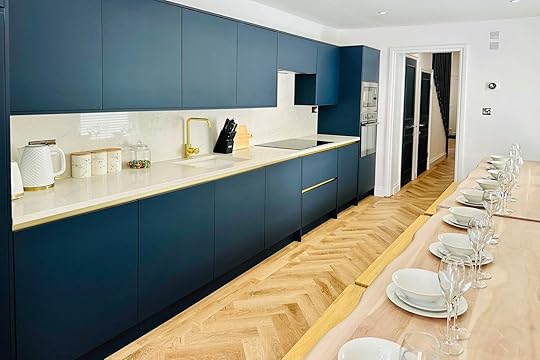 Photo: Airbnb
Photo: Airbnb Photo: Airbnb
Photo: Airbnb Photo: Airbnb
Photo: AirbnbSee more photosRound up your 20 closest friends and rent this massive vacation home. The playful interiors – inspired by “Love Island” – create a fun basecamp for planning nightlife exploits and day trips to rural Wales. There’s an arcade game to fight over in the lounge and a cozy patio at the rear where you can congregate over morning coffee and DIY cocktails. Cardiff Central Train Station is 30 yards from the house and everything else is on the doorstep.
Sixteen+ guests, six bedrooms
Price: $1,458 per night
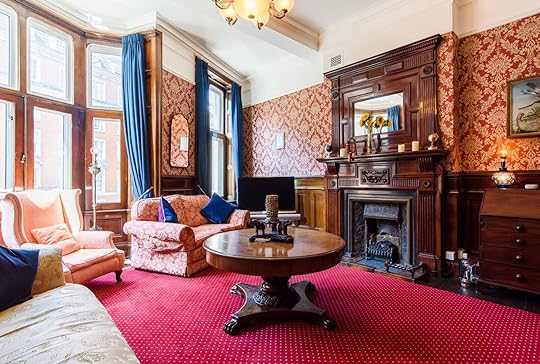 Photo: Airbnb
Photo: Airbnb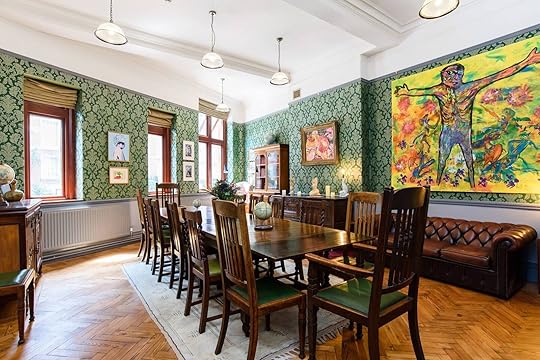 Photo: Airbnb
Photo: Airbnb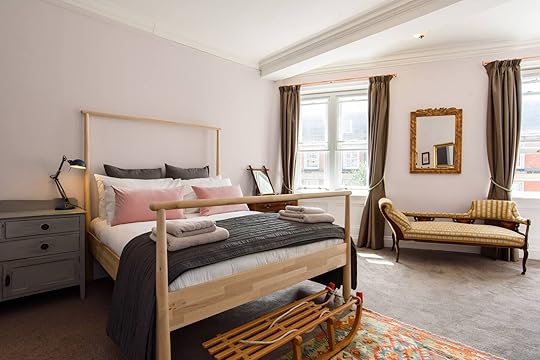 Photo: Airbnb
Photo: Airbnb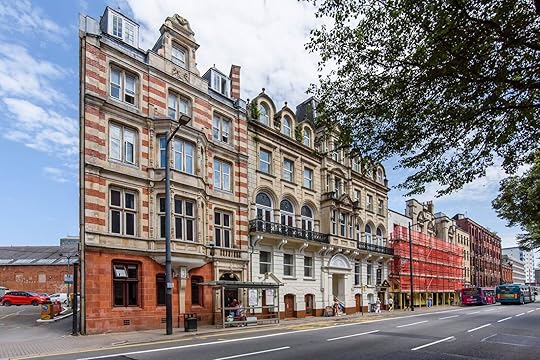 Photo: Airbnb
Photo: AirbnbSee more photosWe’re still waiting for rooms at the castle to become available; until then, you can stay across the street at this nine-bedroom rental home in a Grade II Listed terrace. The interiors are a curious blend of old and new with the private sauna adding a luxurious twist to your Cardiff experience. Besides the castle, you’ll find the Principality Stadium and a wide selection of bars within minutes of the property.
Sixteen+ guests, nine bedrooms
Price: $2,090 per night
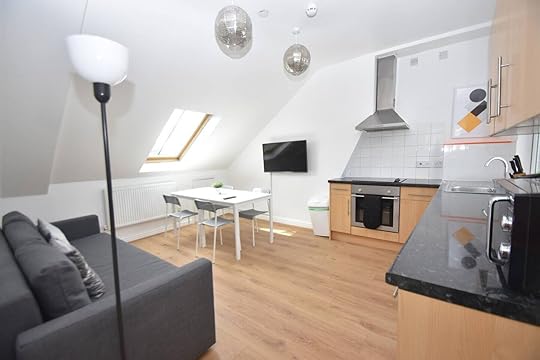 Photo: Airbnb
Photo: Airbnb Photo: Airbnb
Photo: Airbnb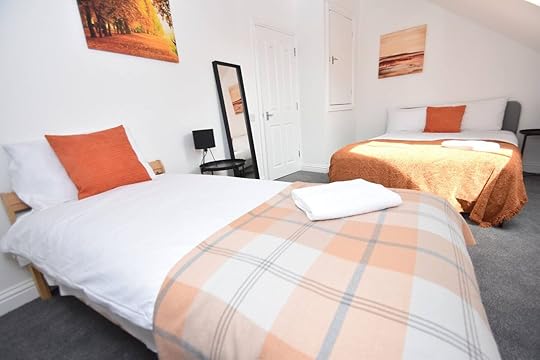 Photo: Airbnb
Photo: Airbnb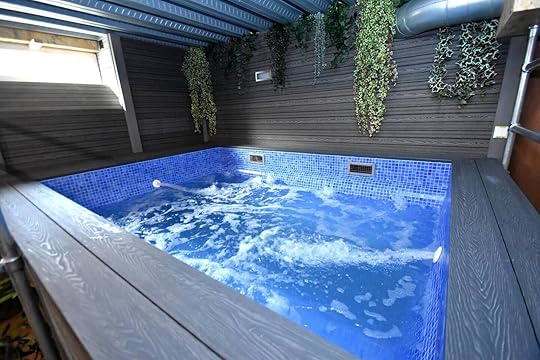 Photo: Airbnb
Photo: AirbnbSee more photosThis gigantic Airbnb in Cardiff Bay is kitted out for bachelor and bachelorette parties – or hen and stag dos, as they’re known in these parts. The bedrooms are configured as bunks to maximize the space while sleeper couches accommodate the largest groups. Contained within a delightful Victorian terrace, the house culminates in a basement party den with a dance floor, tiki bar, and hot tub.
Sixteen+ guests, six bedrooms
Price: $1,740 per night
 Photo: Airbnb
Photo: Airbnb Photo: Airbnb
Photo: Airbnb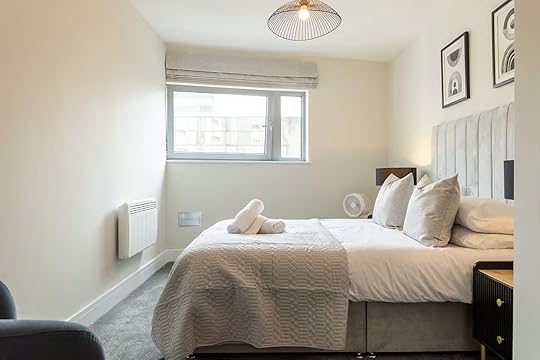 Photo: Airbnb
Photo: Airbnb Photo: Airbnb
Photo: AirbnbSee more photosThis elegant two-bedroom apartment provides a safe and convenient base in the center of the Welsh capital. You’ll be able to walk to all attractions from the rental and connect to places further afield with local public transport. There is also one complimentary parking space if required. The modern condo has high-speed Wi-Fi, keyless entry, and online check-in to ensure a seamless experience from start to end.
Four guests, two bedrooms
Price: $342 per night
 Photo: Airbnb
Photo: Airbnb Photo: Airbnb
Photo: Airbnb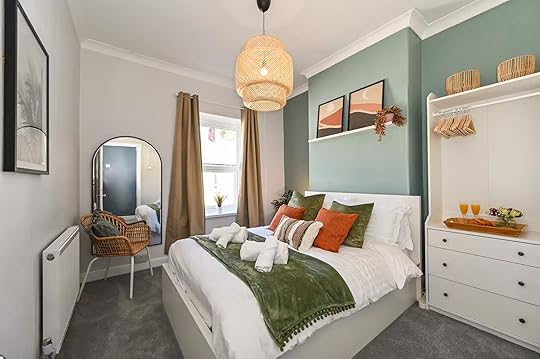 Photo: Airbnb
Photo: Airbnb Photo: Airbnb
Photo: AirbnbSee more photosAfter a long journey, this Guest Favorite Airbnb in Cardiff has everything you’d hope to find in a vacation home. The decor is sublime, the furnishings are comfortable, and the private yard is a bonus on a sunny morning in Wales. The kitchen is well stocked for cooking although there’s a wide selection of restaurants and bars within minutes of the house. This is a great contender for families, friends, and remote workers alike.
Six guests, three bedrooms
Price: $300 per night
 Photo: Airbnb
Photo: Airbnb Photo: Airbnb
Photo: Airbnb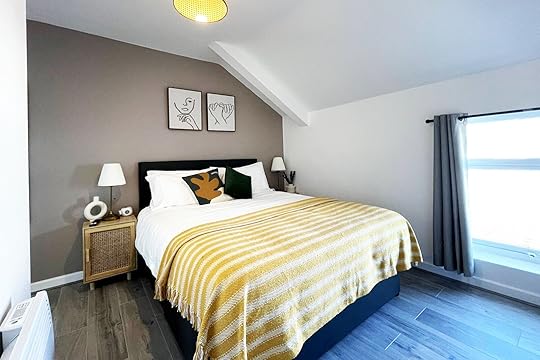 Photo: Airbnb
Photo: Airbnb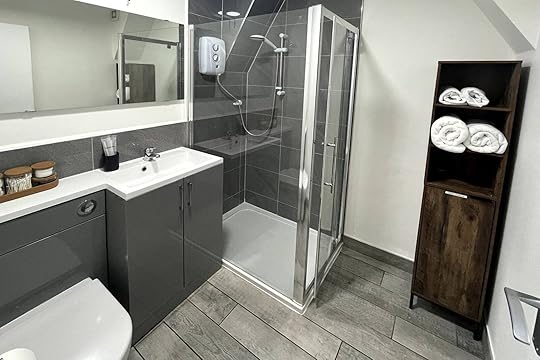 Photo: Airbnb
Photo: AirbnbSee more photosThis compact apartment rental has one bedroom with a king-sized bed, a neat little kitchen, and a modern bathroom. There’s a washing machine in the unit and free parking right outside while most attractions are within walking distance. All in all, it’s impossible to find a more suitable choice of digs for a long weekend in Cardiff – especially for those lucky enough to carry rugby, football, or opera tickets.

Three guests, one bedroom
Price: $148 per night
‘Turn Off Your Lights’: Luxury Cruise Passengers Hear Dire ‘pirate Alert’ at Sea

There are plenty of things people worry about when cruising, like seasickness, crowded restaurants, or even risks like cholera and norovirus. But passengers on a recent Cunard Line cruise through the Philippines, sailing from Darwin, Australia. Passengers were aboard the Queen Anne when the captain made an announcement passengers weren’t expecting: he was implementing a “heightened level of security alertness” for a pirate alert, as the ship was sailing through the Sulu-Celebes Sea, an area known for pirate activity.
During the pirate alert, the external walking decks would be closed from 9 PM to 5 AM, and external lighting would be reduced to make the ship harder to spot from afar. The ship also positioned water cannons at the ready, making them able to shoot a high-pressure stream of water at any boats attempting to approach. Guests were also asked to make changes to their behavior, with the captain asking that they close their stateroom curtains and turn off lights in their rooms.
@lillydapink I am not worried at all. In fact, it’s quite an interesting experience. The ship is safe and well protected, so I will sleep well tonight. Unless the pirate alarm goes off, of course #cruisetok #fyp #cunard ♬ оригинальный звук – Music tour
A representative for the cruise line told The Today Show that the warning was out of an abundance of caution only. “There was no specific threat to the ship or its guests, and our onboard experience remained uninterrupted.” One TikToker shared several videos of the experience, nothing that the next morning, several passengers took to the balcony with binoculars to search the high seas for suspicious boats.
Other passengers on board reported that while the pirate alert was a little alarming, it wasn’t as scary as it may sound, and that the actual crossing was uneventful and pirate-free.
The Queen Anne is a relatively new ship, launched in 2024 and currently on its first “Around the World” voyage, visiting 30 different ports over the course of 108 days. It carries just under 3,000 passengers and is 1,058 feet long, with 14 restaurants and more than 1,000 crew members.
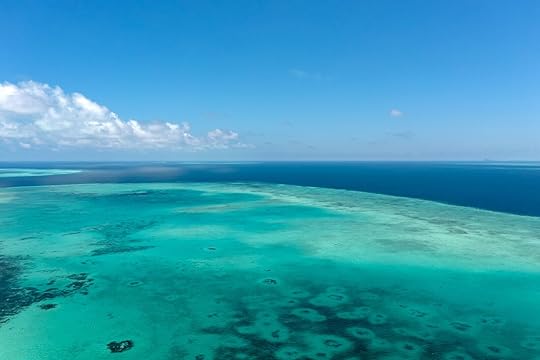
Certain areas around the world. like the Sulu Sea, have a slightly increased chance of pirate activity. Photo: Nokuru/Shutterstock
Globally, piracy is a booming business. According to Europol, piracy generates hundreds of millions in euros since 2000. In the first nine months of 2024, there were 99 reported instances of piracy, up from 90 in 2023. Numbers have climbed in waters like those off the Somali Coast, following the reduction of international anti-piracy forces that had previously kept such threats in line.
While the reasons for a growth in piracy are complicated, there are a few general factors places with high piracy have in common. That includes access to an ocean with ideal piracy conditions, like numerous islands, narrow passages, and geographic features that force larger ships to slow their speed and operate with poor lines of sight. Economic hardship in coastal areas can also lead people toward piracy as a means of survival, especially around countries with weak governance, ineffective maritime law enforcement, high levels of corruption, and territorial disputes.

Countries with known pirate issues often have coastal guards to patrol the shorelines near land. Photo: Vladimir Melnik/Shutterstock
Though it may seem antiquated, maritime piracy actually is an ongoing concern for commercial cruise lines in these specific higher-risk regions of the world, though actual attacks on passenger vessels are extremely rare. The primary piracy hotspots include the Gulf of Aden near Yemen, the Gulf of Guinea off West Africa, and waters in Southeast Asia, particularly the Sulu-Celebes Sea and the Malacca Strait, where the Cunard ship was. Despite only six reported pirate attacks on cruise ships in modern history, cruise lines still plan and prep for what to do if pirates are near.
That includes not just issuing pirate alerts, but measures like adjusting routes to avoid high-risk areas, introducing enhanced on-board surveillance technology, using water cannon systems and longer-range acoustic devices, and training crew members on how to respond, just in case. As cruise ships become larger and larger, they also become more difficult to board, especially for pirate ships that benefit from being small and nimble. 
March 27, 2025
One of the Most Important Film Festivals in the United States Is Moving to Boulder, Colorado
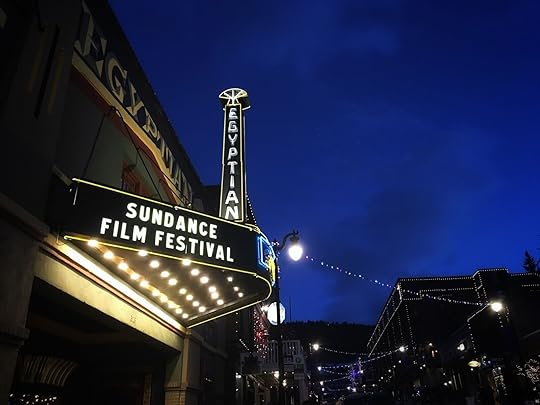
After four decades in Park City, Utah, the Sundance Film Festival will relocate to Boulder, Colorado, in 2027. The move reflects a strategic shift driven by growth opportunities, infrastructure improvements, financial incentives, and evolving community dynamics.
The Sundance Institute’s decision to move the festival from Park City started a year-long evaluation process that considered proposals from more than 100 cities. Boulder was ultimately selected over bigger-city finalists like Cincinnati and Salt Lake City. Boulder’s population and expanded venue options offer more room for the festival to grow than what was possible in Park City. Festival organizers plan to center the event around Boulder’s downtown, particularly the pedestrian-only Pearl Street Mall, and incorporate spaces on the University of Colorado Boulder campus.
Beyond infrastructure, Boulder’s thriving arts scene and reputation as an inclusive creative hub align with the festival’s core values. Financially, the city has pledged $34 million in tax incentives over the next decade to support the transition, according to Deadline. Sundance leaders also emphasized the importance of maintaining a “sense of space and place” — a concept rooted in the festival’s history. Boulder’s natural setting at the base of the Flatiron Mountains echoes the intimate, scenic atmosphere that has long been part of the Sundance experience.
Boulder officials have welcomed the festival’s relocation with enthusiasm. Mayor Aaron Brockett described Sundance as a “perfect match” for the city’s cultural identity, according to NBC, while Visit Boulder CEO Charlene Hoffman emphasized how the city’s walkable downtown, iconic venues, and stunning landscape make it an ideal home for the festival’s next phase. Colorado Governor Jared Polis also highlighted the economic and cultural impact, positioning Sundance as a key driver of growth for the state’s film and arts industries.
“Hosting the Sundance Film Festival is an incredible win for the Boulder region and the state of Colorado,” Colorado Representative Brianna Titone said in a . “The 2024 festival generated $132 million in gross domestic product, created 1,730 jobs paying $69.7 million in wages, and attracted 24,000 out-of-state visitors who spent an average of $735 a day. We expect to see a similar impact for Coloradans and look forward to welcoming the Festival in 2027.”
A cornerstone of independent filmThe Sundance Film Festival is named after the Sundance Kid, played by Robert Redford in the 1969 film Butch Cassidy and the Sundance Kid. Redford, who co-founded the festival, took inspiration from the outlaw’s independent and rebellious spirit, qualities that align with the festival’s mission of championing independent cinema and unconventional storytelling.
The name also connects to Redford’s Sundance Institute, founded in 1981 to support emerging filmmakers. The institute and festival were originally based at Redford’s Sundance Mountain Resort in Utah, reinforcing the name’s association with creativity, independence, and a strong connection to nature.
The Sundance Film Festival was originally held in Salt Lake City when it was founded in 1978 as the Utah/US Film Festival. The festival aimed to promote independent American films and attract filmmakers to Utah.
In 1981, Robert Redford established the Sundance Institute at his Sundance Mountain Resort in Utah, which became a hub for independent filmmakers. By 1985, the festival moved to Park City, Utah, where it grew into the globally recognized event it is today.
The festival has helped launch the careers of directors like Quentin Tarantino, Steven Soderbergh, and Ava DuVernay while premiering groundbreaking films such as Little Miss Sunshine, Get Out, and Whiplash.
Sundance is also a cultural force, providing a space for diverse, underrepresented voices in filmmaking. It champions independent storytelling that might not fit the commercial mold of Hollywood, promoting creativity, risk-taking, and innovation. The festival’s commitment to social and political themes has made it a hub for films that challenge mainstream narratives and push boundaries.
Beyond film, Sundance has an economic impact, generating millions for host cities and boosting local businesses. Its industry influence extends to distribution deals, often determining which indie films will reach wider audiences.
2026 Marks the end of an era in Park CityThe Sundance Film Festival has been synonymous with Park City since 1985, and its exit is a significant loss. Mayor Nann Worel expressed disappointment to NBC, stating, “We put our heart and soul into finding a way to keep Sundance in Utah. Frankly, I don’t know if there is anything else we could have done.”
Despite this, the decision highlights ongoing challenges the festival faced in Park City, including rising costs, limited venue availability, and tensions between the festival and the local community. Some industry insiders noted that high lodging and operational expenses contributed to the need for change, making Boulder a more practical choice for Sundance’s future.
The 2026 Sundance Film Festival, set for January 22 through February 1, will be the last in Park City. As festival organizers work closely with Boulder officials to refine infrastructure and expand accommodations, anticipation builds for the event’s 2027 debut in its new home. 
You Can Now Earn Rewards For Cheaper Airbnb Stays by Staying in a Hotel

Staying in a hotel could now earn you a discount on your next Airbnb. People who book through HotelTonight, a hotel booking platform that surfaces deals for last-minute stays, now get 10 percent back in Airbnb credit for hotel stays. Once a room booked through HotelTonight and the trip completed, 10 percent of the booking amount (excluding taxes and fees) is added to your connected Airbnb account and is valid for one year. Plus, those credits can be stacked from multiple HotelTonight Bookings and are automatically added — no blackout dates.
It’s not exactly a loyalty program like the major hotel brands have, but it does offer a cash-back-rewards-style incentive for both new and existing HotelTonight and Airbnb users in the United States and UK.
HotelTonight was founded in 2010 highlighting discounts up to 30 percent compared to other booking sites. As the name suggests, the original goal was to connect travelers with last-minute hotel deals and help properties fill rooms. Today, HotelTonight users can book for the night-of up to 100 days out in over 90,000 hotels across 127 countries.
Airbnb acquired HotelTonight in 2019. The two have remained distinct and largely operated independently until this connected-account perk.
Whether Airbnb will further merge hotel offerings with its home rental model remains to be seen. For now, the new credit perk provides an incentive for HotelTonight users to engage with Airbnb’s broader travel ecosystem. 
March 26, 2025
The World’s First Museum of Barbecue Opens in Kansas City in April

A new establishment dedicated to smoke, sauce, and regional pride is coming to Kansas City. The Museum of BBQ — billed as the world’s first museum devoted entirely to the art and culture of barbecue — opens April 12 at Crown Center, solidifying the city’s status as an international barbecue epicenter.
Occupying a 4,223-square-foot space, the museum is an interactive journey through the techniques, flavors, and regional identities that define American barbecue (not just the world-famous Kansas City style barbecue). There’s certainly lots of history to choose from, as a road trip through the Barbecue Belt shows, from North Carolina’s two core styles, to all of the influences that make up Texas barbecue culture. American barbecue culture is so vast — consider the regional barbecue styles in California, Chicago, Baltimore, and more — that it can’t be contained in one museum. But this is a good place to start for any lover of all things smoked, grilled, and cooked over an open flame.
Museum of BBQ founder Jonathan Bender is an Emmy Award-winning writer and certified barbecue judge who has covered the barbecue scene for more than 15 years. He created Burnt Legend, a 30-minute documentary on Kansas City’s signature burnt ends, and is the author of “LEGO: A Love Story, Stock, Broth & Bowl”, and “Cookies & Beer”.
Guests enter through a door modeled after a Southern Pride smoker. Tickets are $10, and available online with timed entry slots every 30 minutes. The museum will be open Monday through Saturday from 10 AM to 6 PM, and Sunday from noon to 5 PM.
Traveling to Kansas City? Check out Matador’s accommodation guides: The Best Kansas City Airbnbs to Experience the City’s Barbecue, Beer, and Fountains The best Cannabis-Friendly Airbnbs in Kansas City, Missouri This Road Trip Will Take You to the Most Wish-Listed Airbnbs in the MidwestThe self-guided experience features 10 installations. The first half — Meat, Rub, Wood & Fire, Smoke, Sauce — covers barbecue’s core elements. Guests can match butcher cuts in a pig puzzle, test their spice knowledge, and toss rings into smoke clouds. The second half explores barbecue’s regional diversity, with rooms dedicated to the Carolinas, Memphis, Texas, and Kansas City.
Each room offers a blend of historical insight and interactive play. In the Memphis room, guests can listen to barbecue-themed dad jokes. In the Carolinas, a mustard-colored championship belt nods to the region’s signature sauce. Kansas City’s space dives into the lore of burnt ends, while the Texas exhibit teaches brisket ordering etiquette.
Among the most talked-about features is the “bean pit,” a ball pit experience sponsored by Bush’s Beans and designed to appeal to kids and adults alike.

Photo: Museum of BBQ
Beyond exhibits, the museum houses a retail store with regional sauces, spice rubs, tools, and grill-side snacks — from hickory-smoked cheese puffs to meat spritzes and barbecue mops. Artworks by national and local creators, including Kansas City-based Sike Style and the Carpenter Collective, add visual texture to the experience.
The project is backed by sponsors including Bush’s Beans, Prairie Fresh, Southern Pride, Visit KC, and the National Barbecue & Grilling Association. Alex Pope, chef-owner of Local Pig, a Kansas City whole animal butcher shop, is a partner in the museum.
One important tip? Arrive hungry. 
This Colorado Mountain Company Is a Luxury Alternative to Hotels or Typical Short-Term Rentals
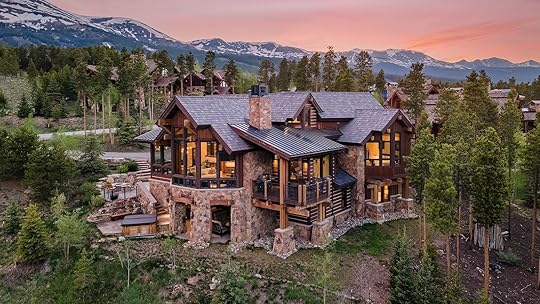
In 2025, travelers aren’t necessarily just looking for somewhere to sleep at night – they’re looking for an experience beyond “drab” traditional overnight accommodations. Where you set home base for your day’s adventures has become a larger part of the vacation experience. Major hotel brands like Marriott and Hilton have made major inroads into the adventure travel market, signalling that industry leaders believe this trend is here to stay. Nowhere is the desire for a memorable base more apparent, however, than in the market for short-term rentals. Many travelers have used Airbnb or VRBO, but smaller, localized options like Moving Mountains tend to offer personalized services and curated travel itineraries, making them more like a full-service travel agency than simply a provider of a place to crash.
A quick look at the short-term rental market in mountain towns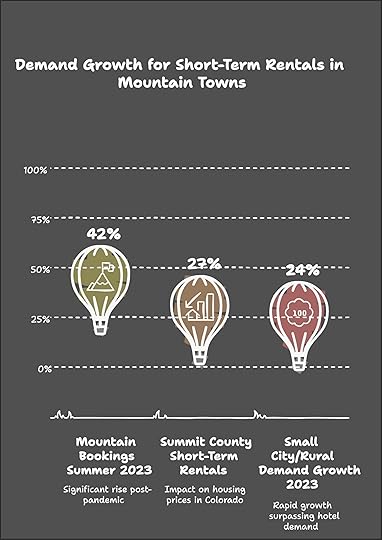
Short-term rental growth is up in Colorado mountain towns, and the demand has driven home prices up in popular resort areas, including 27 percent in Summit County. Data: KUNC, Hospitality Investor. Graphic: Matador Network
Vacation rentals have been a part of the tourism market for decades, offering larger gatherings of travelers such as families and groups of friends a place to spend a night together, in their own private space and with amenities like a kitchen, laundry machines, and living space. There are dozens of vacation rental programs, and it can feel overwhelming to keep up with and decide which is the best for your vacation.
The international market leader is Airbnb, which was founded in 2007 when two struggling artists turned their apartment into a temporary Bed and Breakfast after noticing a lack of hotel space in their home of San Francisco to accommodate travelers coming into town for a conference. This business has grown to become extremely successful, netting over $11 billion in revenue in 2024, while also controversial (it’s no secret how guests are increasingly complaining about necessary “rules” and regulations in these types of accommodations that would not be expected at a hotel — such as doing their own housekeeping services, and residents in some communities across the globe have claimed these short-term rentals drive up rent prices and make it harder for locals to maintain in-tact communities). Still, Airbnb remains a solid, recognized leader in the vacation rental market.
Other brands like Kindred offer vetted home-swapping for those who are feeling more bohemian and/or on a budget, and there are more localized options like Stay Montana which specifically oversees Treasure State vacation rentals, which my family uses for an annual trip to Bigfork on Flathead Lake. Then, there’s VRBO, which stands for “Vacation Rentals by Owner,” created back in 1995 by a retired teacher in Aurora, Colorado who wanted to rent out his Breckenridge condo.
Nowadays, someone seeking to rent out their Breck condo might turn specifically to Moving Mountains (which was founded shortly after VRBO, in 1997). This hospitality company manages properties in Beaver Creek, Breckenridge, Steamboat Springs, and Vail, Colorado, and specializes in private luxury vacation rental homes that can accommodate larger groups, from eight to 30 guests.
But as expectations of what “hospitality” stands for have transformed over the decades, so too have companies like Moving Mountains. Now, these businesses take the time to go beyond just renting a place out and keeping it clean in-between guests. They curate upscale travel experiences in the locations of their premium vacation home rentals — and offer travel planning for visitors and property management services for owners.
It’s the ultimate in privacy and personalization, aligning with travelers’ expectations of getting more than just “high-end accommodations and exclusive destinations.” Now, guests are also getting concierge services and tailored experiences that cater to their individual desires. It’s like having a travel agent, home management, and personal assistant all in one.
Moving Mountains’ extra effort in caring for their guests translates to services such as pre-arranging lift tickets, booking time in ski school, arranging equipment rentals, and handling the logistics for other planned activities like restaurant reservations. The team will stock your home with the groceries you want before your arrival so it’s ready for you when you get there — and can even arrange a private chef to come and cater tasty, special dinners.
There are a wide variety of homes with different amenities on the Moving Mountains platform, including homes with private hot tubs, ski-in/ski-out locations, pet-friendly options, and more. Those who want an even more “upscale” upscale experience can browse Moving Mountains’ “Apex Collection,” which includes ultra-luxury “apex” choices. These homes feature even more incredible views, unrivaled home technology, and impressive design features.
What’s it actually going to cost me?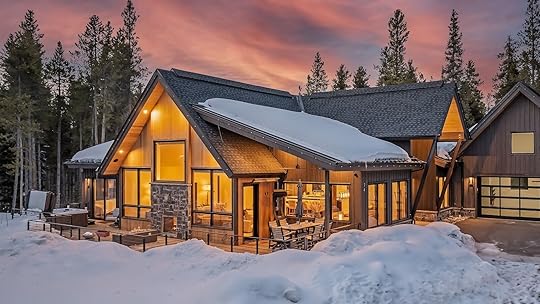
Photo courtesy Moving Mountains
One of the details that drew me into learning more about Moving Mountains was its incredible portfolio of properties paired with an ability to actually be able to rent one of these places out even if only for a night or two (I’m someone who will not be arriving in a private jet…).
It is the best of the best, but it’s not necessarily entirely unattainable for the average family or group of friends if you can manage to wrangle eight people and split the cost of a weekend at one of these stunning mansions. For example, if I were to book the property we stayed in, Chalet Brio, around the same time in 2026 – let’s say for three nights, during the last weekend of February — it would cost $7,230 total.
In theory, you could sleep up to seven people in the property, making it roughly $1,000 total per person for the whole stay, and about $330 per person, per night (or $660 per couple) which would run you about the same (if not less) than a hotel room in the area during the same time of year — only with much more of your own private space to relax, as well as personalized amenities.
This makes Moving Mountains an excellent option for a group of travelers or a multi-generational family who all want to share a space less than 100 steps from the lifts. As an added bonus, Moving Mountains recently established a partnership with American Express Select Homes + Retreats and Homes & Villas by Marriott Bonvoy — which means travelers can even book their stay using membership rewards points (while still earning additional points during their visit).
Our rental experience at Chalet Brio in Beaver Creek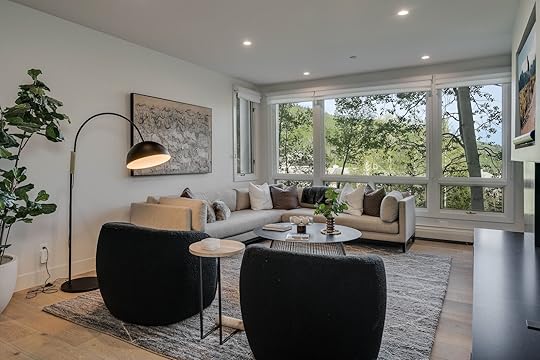
The living room at Chalet Brio. Photo courtesy Moving Mountains
About a week before our check-in at Chalet Brio in Beaver Creek, I received an email from our “personal concierge” with instructions on how to get to our rental, codes for the building and its amenities, and details on where to park. She also offered to look into organizing any activities I’d like to do while in Beaver Creek, such as booking lift tickets, dinner reservations, or a sleigh ride.
We were all set with lift tickets and planned to ski both days we were there and cook at the condo — so we didn’t need any activities organized — but the opportunity to have someone organize things for you was cool and would definitely have saved me a lot time if I were the head of a large family planning a trip, and needing some extra support with logistics.
This concierge was solid at communicating when I had questions about my visit. I appreciated having someone who I knew could answer my questions about those little details like parking and driving directions. In terms of location, our condo’s slopeside perch was impeccable. It was right on the mountain, just steps from the lift and walking distance to the main village area of Beaver Creek. We couldn’t have been in a better spot for strapping on our ski boots, clipping in, and hopping right onto the lift (which was just a stone’s throw from our condo’s front door).
Shortly after we arrived at the condo, someone from the local Moving Mountains office stopped by to give us a “welcome gift” of a bottle of wine, some chocolate, and a plush toy of the brand’s mascot moose. I liked and thought it was unique that the folks who helped us at our rental were on a team that was locally based in Beaver Creek (the teams for each area — Breckenridge, Vail, Beaver Creek, and Steamboat Springs — are based in their own mountain community) so they could offer unique knowledge on things such as restaurants and activities and would actually physically be there if we needed anything.
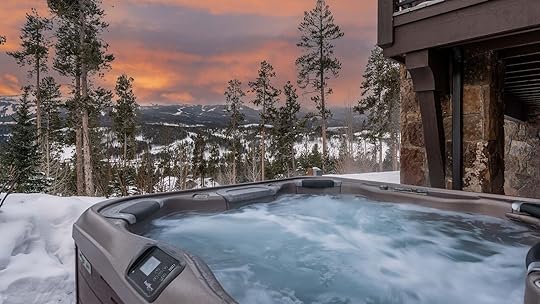
Photo courtesy Moving Mountains
I appreciated the luxurious amenities in our seven-person Beaver Creek condo which included cozy robes, high-end toiletries, and technology like an enormous flatscreen TV with surround sound audio. But it also had those small touches and details that made it feel like someone’s home (because, it is…) such as the workings needed to build a real fire in the fireplace (kindling, starter logs, wood, and fireproof gloves) board games, puzzles, an awesome coffee maker and a Nespresso machine (why not both?) and more equipment to make and enjoy a home-cooked dinner than I honestly have in my own house back in Denver. And the view of the mountain out of our living room window wasn’t too shabby, either.
One detail I’d warn travelers to be wary of (at least in our situation) was that our seven person, three bedroom condo was only supposed to come with one official parking pass. Even though our personal concierge person was helpful in offering suggestions for alternative places our additional guests could leave their car, I can see this “one parking pass” thing being quite an inconvenience for a multi-gen family of seven arriving in three different cars.
Another hitch I ran into (which was fully my fault) is that I left my bathing suit behind at the condo (the building’s community hot tub was great). The Moving Mountains team sent me a text message after the cleaning crew went through to let me know they found it, and could mail it to me for a $10 handling fee — plus the shipping costs. I understand the need to keep things corporate in this type of business setting — but it was disappointing it would cost me so much to get my bathing suit back because it was a pretty tiny item and I only live about 1.5 hours, or 90 miles away.
I don’t hold it against Moving Mountains for using this type of a solid and “across the board” procedure for handling “lost items” and I’m sure other folks leave much larger, heavier, and more critical stuff behind.
I know the Moving Mountains team needs to factor in these “handling fees” to accommodate the time and labor it takes them to get it into the mail. It just felt like a bummer, because I once left my dog’s bed at a hotel in Santa Fe, and they mailed it back to me for free.
The bottom line
Photo courtesy Moving Mountains
If you’re seeking a vacation rental company that will give you uncompromised personal attention, paired with a collection of stunning Colorado homes in fabulous locations — this is the opportunity for you. It felt as comfortable as staying in a friend or family member’s home, but without the necessity of having to be on your very best behavior, looking over your shoulder the whole time.
It was nice that someone else could in theory take care of the challenging logistical details that I might not want to deal with, like making reservations for large group dinners or booking ski lessons for a variety of different people at different levels.
I especially appreciated the local touch of the Moving Mountains property managers — it felt nice to know the folks managing my visit were based right in town and would be around if I needed anything as small as a suggestion for where to grab dinner or as localized and specific as what the best ski runs at Beaver Creek for an intermediate/advanced skier might be.
Overall, Moving Mountains could be an excellent investment on a group vacation for those seeking somewhere luxurious, featuring a concierge service and only hosting homes in stellar locations. I know I’d definitely book with them again.
Other things to do while you’re in Beaver Creek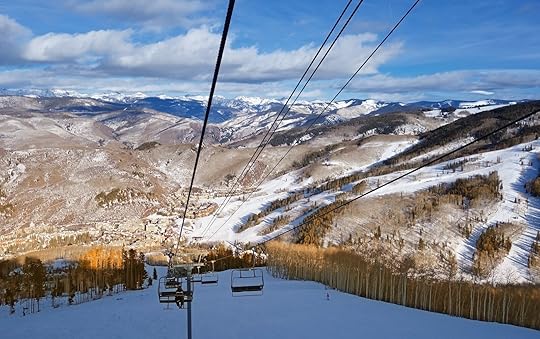
Photo: Eva Golecka/Shutterstock
If you’re in town in the wintertime, snowsports are a must. Beaver Creek Resort offers terrain ranging from beginner to expert to everything in between — and if you’re not a skier or snowboarder, try snowshoeing. The Nordic Sports Center is right at the base of the mountain, where you can rent equipment, sign up for a guided tour, and get information about the trail system. It’s directly across from the Strawberry Park Express Chairlift, which is what you’ll take to get up to the McCoy Park area of the mountain and explore roughly 12 miles of dedicated trails for cross-country skiing and snowshoeing. The views are breathtaking, and it’s an excellent workout.
After a day of adventures, don’t miss the unforgettable opportunity to refuel and dine at one of Beaver Creek’s signature on-mountain cabin restaurants. These three stately cabins are tucked away amongst the trees and trails up on the mountain, serving delicious food in a destination that literally cannot be reached by car (our server, fittingly, noted that he sometimes snowboards into work). Beano’s, Zach’s, and Allie’s cabins are each accessible only via snowcat-pulled sleigh — and boast gorgeous views with just as impressive menu selections.
If you go to Zach’s, order the fondue — it’s one of my favorite meals I’ve ever enjoyed dining out. Paired with a glass of wine from the extensive wine list and the coziness of the cabin’s fireplace, it made for a perfectly fitting way to refuel after a day of mountain adventures in Beaver Creek. 
The 24 Dreamiest Island Airbnbs in the Mediterranean
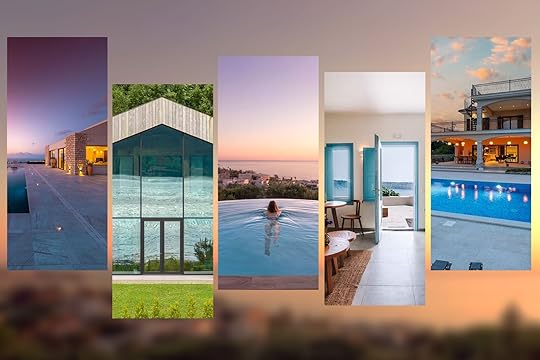
The Mediterranean coast is peppered with thousands of islands. Greece alone has 6,000 islands and islets. Granted, many are inhabited, and without a private vessel, they remain a closely guarded local secret, but you might be surprised to learn of some postcard-perfect islands that European vacationers have relied on for a fix of island life for decades. Greece’s car-free haven of Hydra, where donkeys still rule the roads, and Italy’s volcanic Ischia remain uncharted — at least for many travelers from the US.
The Mediterranean islands offer the laid-back lifestyle synonymous with what we expect from Europe but on a grander scale. Whether you’re looking for world-class partying or a remote romantic small town surrounded by olive trees and vineyards, chic beach bars, or unsung secluded coves with turquoise waters, you’ll find it on one of the Med’s many islands.
Despite the popularity of Spain’s Balearic Islands, Sicily, and Sardinia, you can still find pockets of tranquility away from the main drag. One of the easiest ways to do this is by renting an Airbnb either outside the most popular island towns or by opting for a property that is an island sanctuary in itself. From pretty stone homes clinging to hillsides, renovated historic villas, and ocean-view luxury properties with infinity pools, these Airbnbs are breathtakingly beautiful. Here are some of the dreamiest properties for an unforgettable stay in the Med.
Croatia | France | Greece | Italy | SpainKrK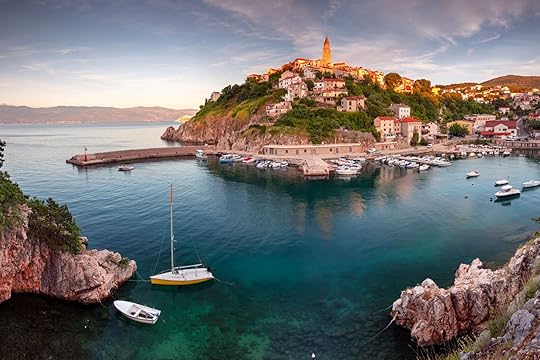
Photo: Rudy Balasko/Shutterstock
Emerging from the cerulean Adriatic Sea, Krk, Croatia’s largest island, is one of the most popular spots in the country. Because of this, I highly recommend visiting in the fall when the sea is still warm and the crowds have thinned out. Due to Croatia’s recent boom in tourism, that logic can be applied to the entire country. Unlike many of its 1,243 sister islands, under 50 of which have permanent communities, Krk is lively — to say the least. Accessible via a bridge from the mainland, Krk town is pretty, but its souvenir-laden streets aren’t for all. There are quieter spots like Punat’s tranquil bay, which shelters the islet of Košljun. To the south, Baška’s sandy beach caters to sun-seekers, and the village of Vrbnik, perched on cliffs, is a haven for those who prefer a more low-key local experience. Each locale, shaped by centuries of cultural exchange, contributes to Krk’s character, a mix-match of heritage and modern tourism.
Luxury villa in the village of Žestilac Photo: Airbnb
Photo: Airbnb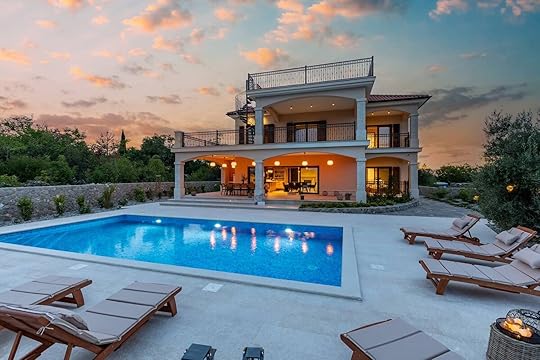 Photo: Airbnb
Photo: Airbnb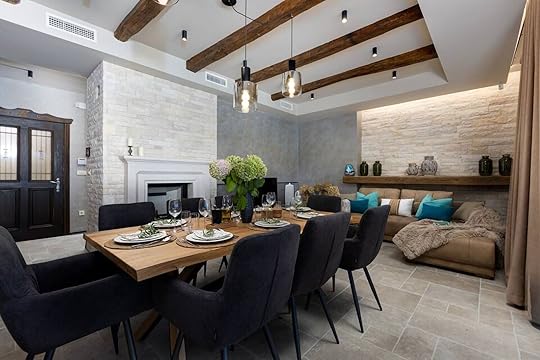 Photo: Airbnb
Photo: Airbnb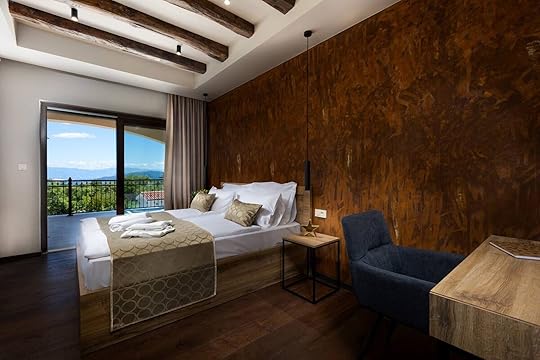 Photo: AirbnbSee more photos
Photo: AirbnbSee more photosStick to small villages and away from the main town of Krk for a low-key island getaway. This luxury villa is in the village of Žestilac, under two miles from the beautiful pebble-stone Petrina beach. The four-bedroom is good value for money, considering it has a pool, sauna, and wine cellar. The family villa is divided into three floors, so there’s plenty of space indoors (and out) for a group of eight. Another luxe option is this four-bedroom home in the hamlet Bajčići or this stunning modern sea view villa within walking distance of the charming village of Klimno. For something smaller, couples or small families should check out this pretty stone home with a pool in the tiny town of Sveti Ivan Dobrinjski. All of these rentals are within driving distance of the town of Krk, meaning you can pop in for dinner and retreat to the countryside for a peaceful night’s sleep.
Eight guests, four bedrooms
Price: $489 per night
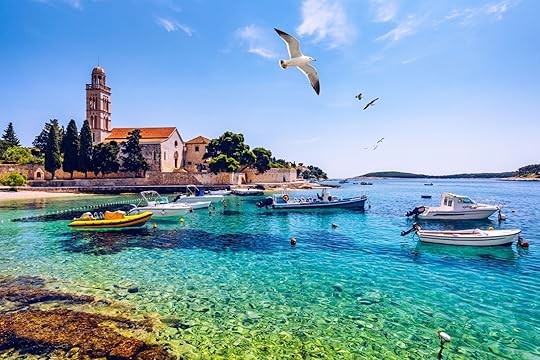
Photo: DaLiu/Shutterstock
Hvar draws a sophisticated crowd with its refined coastal lodging, dining establishments, and stylish waterfront bars, where arrival by boat is the norm. The island caters to those who appreciate luxury in a relaxed setting. The southeast’s Hvar Town is the island’s hub for upscale dining and evening entertainment, where lodging options reach capacity during peak season. But just outside town, you’ll stumble across beautiful historic villages with stone houses, wineries, and jaw-dropping sea views. Staying on the outskirts means you can dip in and out of the “scene” and return to your vacation rental surrounded by lavender fields and olive groves. The island is accessible via ferry from Split or Drvenik on the mainland, offering daily connections that vary seasonally.
Rustic villa in the historic ghost town of Malo Grablje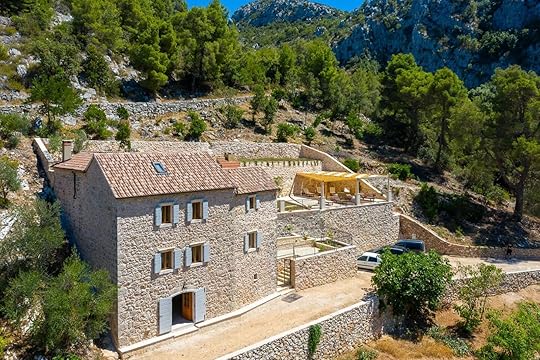 Photo: Airbnb
Photo: Airbnb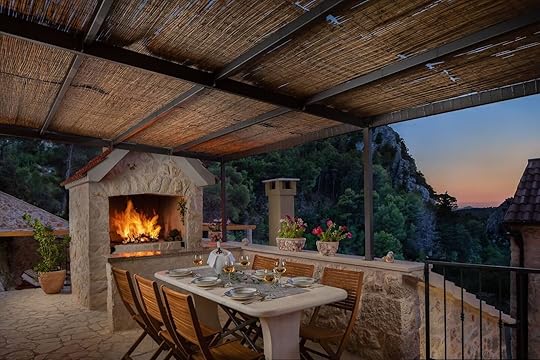 Photo: Airbnb
Photo: Airbnb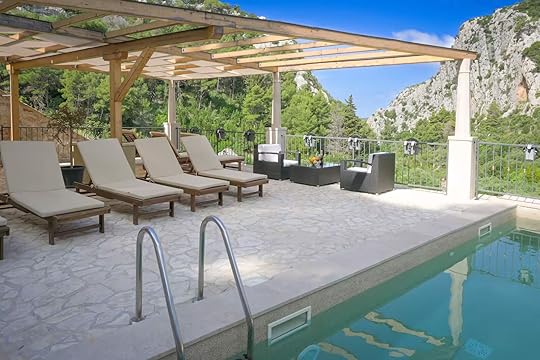 Photo: Airbnb
Photo: Airbnb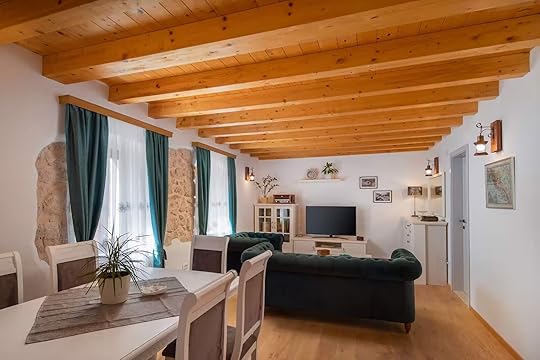 Photo: Airbnb
Photo: Airbnb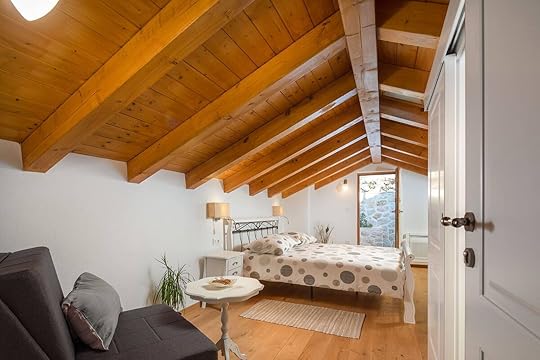 Photo: Airbnb
Photo: Airbnb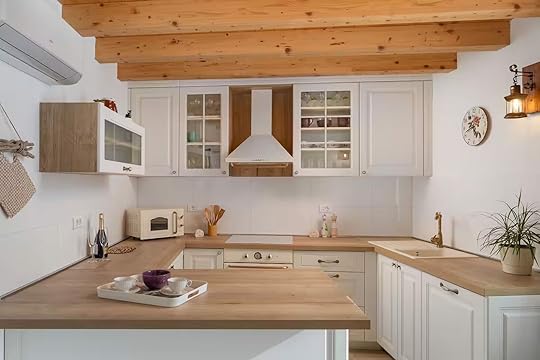 Photo: Airbnb
Photo: AirbnbSee more photos
Accommodations in Hvar can be pricey compared to other places in the country. But your dollar will go further in the Croatian islands than in other European isles such as Sardinia or the Balearics. For a rustic yet chic stay, have a look at this family-owned villa in Malo Grablje. The village has a fascinating history. It was deserted in the 1960s when a vine disease wiped out the grape crops. The residents, who relied on the industry, relocated to the coastal settlement of Milna, but today, you can wander through the village’s hauntingly beautiful ruins or, indeed, stay in one of the restored homes. The historical old stone house is around a mile from the beaches of Milna Bay and has an outdoor heated pool, Jacuzzi, sauna, small gym, BBQs, and three bedrooms. Another equally beautiful rental is this four-bedroom on one of Hvar’s most spectacular stretches of coastline. With its elegant interiors, breathtaking views, direct sea access from the tired garden, and walking distance to the village of Ivan Dolac, this is one of my favorite Airbnbs on the island. Many of the Airbnbs in Hvar are on the larger side. You can find compact modern apartments, but the decor can often be a little dated. For couples, you might find a suite like this a better option. It has everything you need in a rental: a kitchen and a pool, and the interior is as chic as a high-end hotel.
Eight guests, three bedrooms
Price: $623 per night
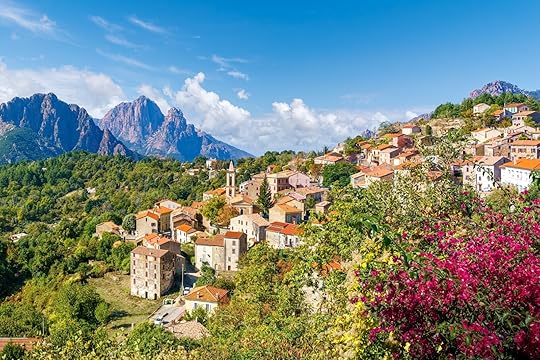
Photo: Balate.Dorin/Shutterstock
Known as the Ile de Beauté (the Island of Beauty), Corsica is far from a secret for Europeans. Yet, despite being accessible via a relatively short flight from mainland France, it remains less frequented by travelers than islands such as Sicily or neighboring Sardinia. Corsica is a one-stop shop catering to families, outdoor enthusiasts, and couples looking for a romantic hideaway. The stunning coastline is complemented by charming hilltop villages, UNESCO World Heritage sites, a thriving local wine industry, pristine white sand beaches, and the opportunity to discover secluded coves and hiking trails away from the crowds.
Traditional Corsican stone one-bedroom home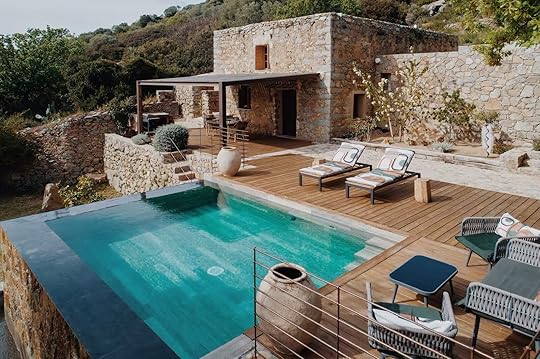 Photo: Airbnb
Photo: Airbnb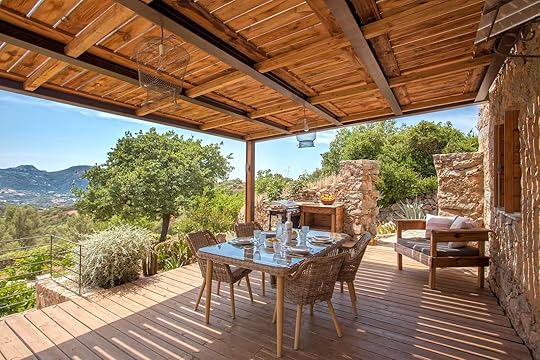 Photo: Airbnb
Photo: Airbnb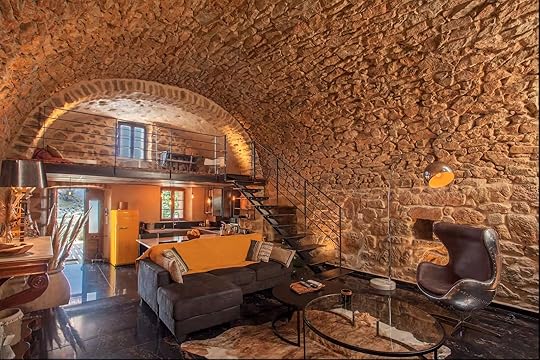 Photo: Airbnb
Photo: Airbnb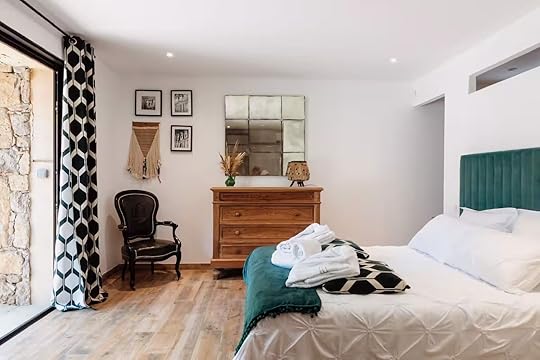 Photo: AirbnbSee more photos
Photo: AirbnbSee more photosYou can have a lot of fun and while away an afternoon looking at Airbnbs in Corsica. Corsican homes are traditionally built from the island’s bedrock from locally quarried stone like granite and schist. This keeps homes warm in winter and cool in summer and integrates beautifully with the surrounding environment. This typical Corsican stone home is on a wooded property between the villages of Pigna and Corbara. The one-bedroom seamlessly blends into the hillside of rock and is a top-five percent rental on Airbnb. For more space, this sprawling modern villa (with five bedrooms) overlooking the bay of Valinco and the marina of Propriano will do nicely. It’s a few minutes from the most beautiful beaches and coves of southern Corsica and has panoramic sea and mountain views.
Two guests, one bedroom
Price: $347 per night

Photo: Vlas Telino studio/Shutterstock
Some say Crete is still off the radar. Those like myself who traveled there in the 90s might disagree, but Greece’s largest island remains my “go-to” for a vacation beyond the typical beach package the country does so well. Often referred to as the “Zeus” of the Greek Isles (it was the island of Zeus and Zorba, after all), many come to Crete for the history and to eat. The island’s Cretan olive oil, honey, and produce are among the nation’s best, and the winemaking is also experiencing a revival. The northern coast beaches have perfected the backdrop for luxury resorts, while the mountainous interior feels more authentic with traditional villages and archaeological sites. Reaching Crete from the US will likely involve flying to Athens and connecting to Heraklion or Chania. Ferries from Piraeus are also an option, though they involve longer travel times.
Chic and minimal villa with killer views in south Crete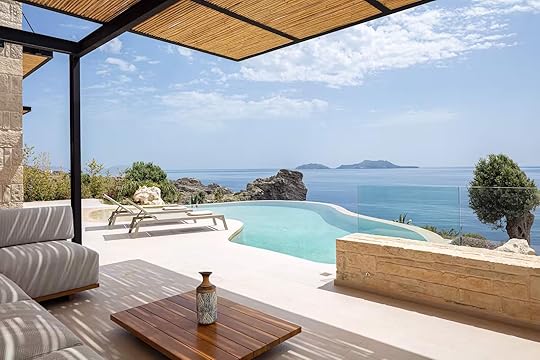 Photo: Airbnb
Photo: Airbnb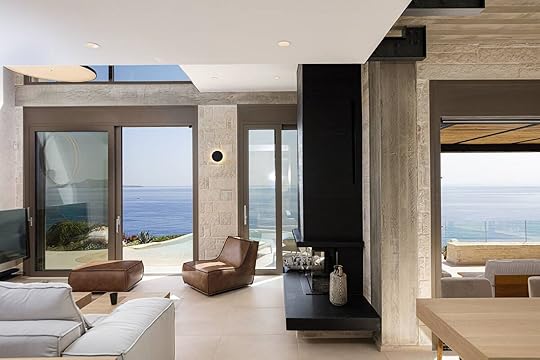 Photo: Airbnb
Photo: Airbnb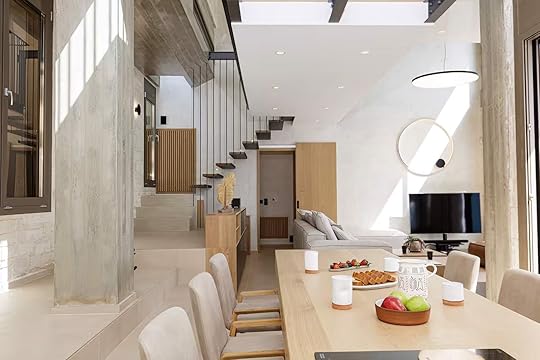 Photo: Airbnb
Photo: Airbnb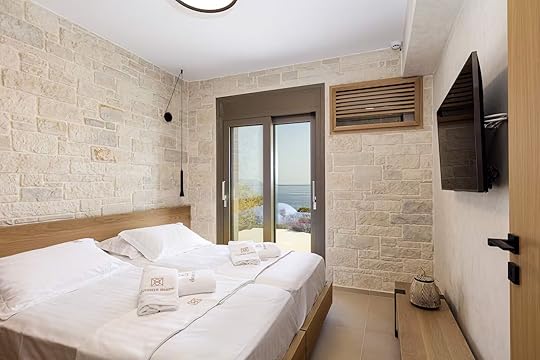 Photo: AirbnbSee more photos
Photo: AirbnbSee more photosAgain, Crete is an island where you’ll have a more authentic experience if you skip the resorts and rent a home away from the main tourist areas. For a private haven with out-of-this-world views, this award-winning smart villa overlooks the crystal clear, turquoise waters of south Crete. It’s minimalist in design. The interiors (and pool overlooking the water) will make your Instagram followers green with envy, and guests have access to a private small cove, so there’s no fighting for beach space. Another secluded luxe option with an extra two bedrooms is this villa with a heated infinity pool and equally impressive views in Agios Onoufrios. Couples and solo travelers should check out this top one percent one-bedroom villa in Agia Pelagia. The modern, stylish home has views of Lygaria Bay and is a quick 25-minute drive from Heraklion Airport.
Five guests, two bedrooms
Price: $452 per night
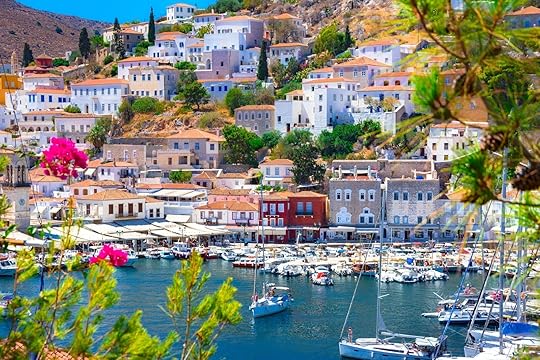
Photo: Georgios Tsichlis/Shutterstock
The island of Hydra had a reputation for being chic way before Mykonos came on the scene. This is in part due to its proximity to Athens (you can get here in two hours via a short ferry ride) and the car-free haven being featured in Sophia Loren’s 1956 film, Boy on a Dolphin, which attracted celebrities, artists (Leonard Cohen composed Bird on the Wire here), and writers seeking inspiration in its tranquil setting. Hydra is characterized by its single town, which lacks paved roads and even bicycles, relying instead on donkeys for transport and water taxis for coastal travel. While day-trippers from Athens frequent the waterfront, the island’s inland is where local life plays out, and you can still find pockets of arty, laid-back communities of blow-in expats.
Sea-facing 4-bedroom home with a citrus orchard Photo: Airbnb
Photo: Airbnb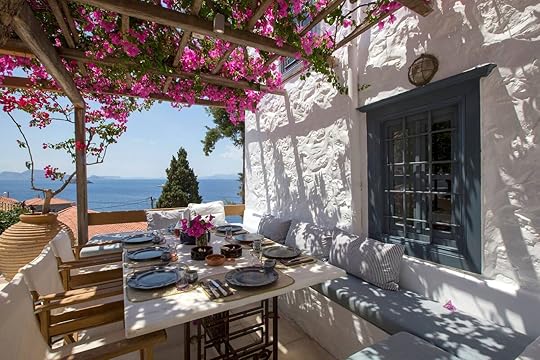 Photo: Airbnb
Photo: Airbnb Photo: Airbnb
Photo: Airbnb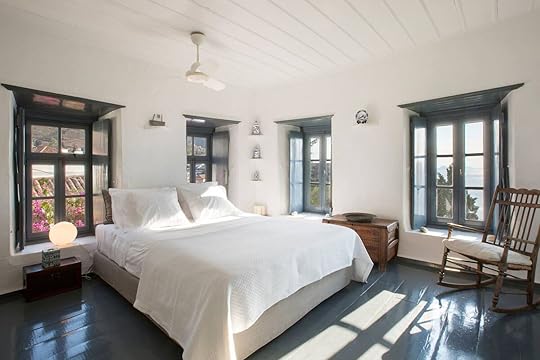 Photo: AirbnbSee more photos
Photo: AirbnbSee more photosChuck a stone in any direction on Hydra, and you’ll hit a romantic home that would make the perfect hideaway for writing a novel. You really are spoilt for choice on the island, but keep in mind that vacation rentals book up quickly, especially in the summer months, so plan ahead to snag your dream home. This top ten percent Airbnb called “Villa Francesca” sleeps eight and is a short walk from Hydra harbor. The sea-facing home was built in the 1950s and was recently fully restored. Set in a beautiful Mediterranean garden of citrus, olive, cypress, and bougainvillea trees, the three-bedroom has three separate terraces that complement the living spaces indoors. If you’re considering penning a melodrama, this restored ruin brings all the drama. The beautifully renovated three-bedroom has a huge garden overlooking the island and a swimming pool. Just promise me you’ll have a fabulous ice-cold martini at sunset if you book a stay.
Eight guests, four bedrooms
Price: $842 per night
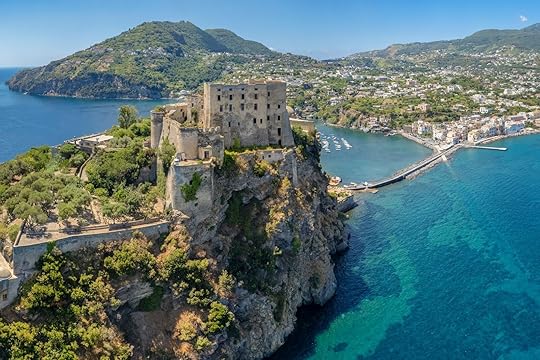
Photo: Karel Funda/Shutterstock
The romantic sibling of Capri, Ischia’s reputation as a wellness retreat rooted in its ancient Roman thermal spas continues to draw visitors seeking rejuvenation. The volcanic island shares the Bay of Naples with the glamorous sister island of Capri, but it only has a fraction of footfall. If you’re looking for something beyond a conventional beach vacation, you’ll find hard not to fall in love with Ischia’s landscape of lemon groves, vineyards, and olive trees is a rugged beauty. It has long been favored as a retreat for Neapolitans as it’s situated a short distance from Naples. Ferry trips to the island take just over an hour, making it a relatively accessible yet distinctly different experience than the mainland.
Infinity pool villa on the Bay of San Francesco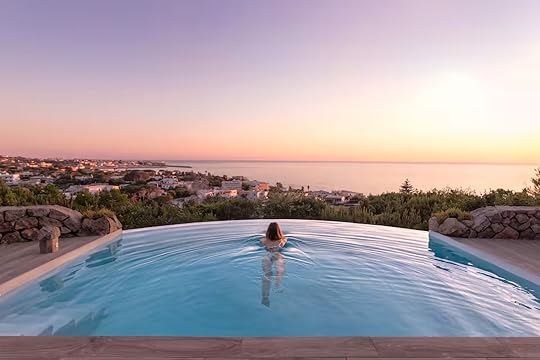 Photo: Airbnb
Photo: Airbnb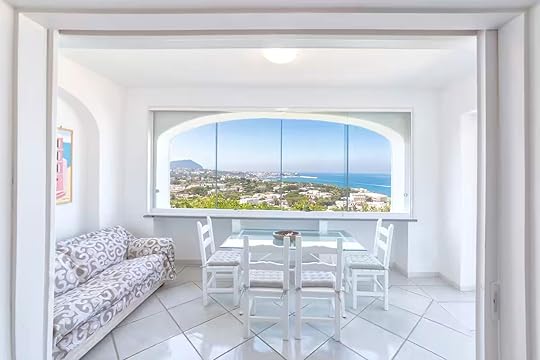 Photo: Airbnb
Photo: Airbnb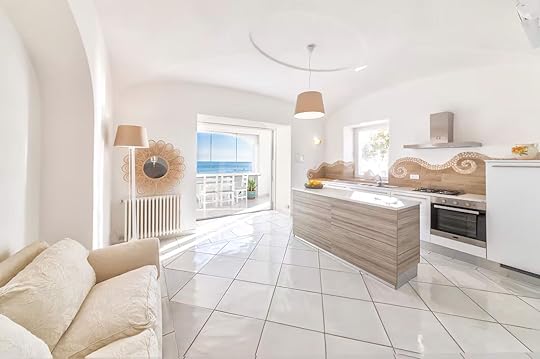 Photo: Airbnb
Photo: Airbnb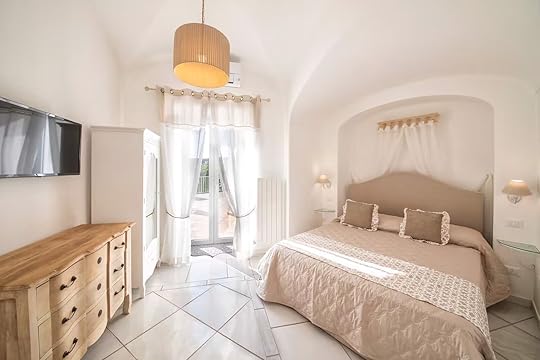 Photo: AirbnbSee more photos
Photo: AirbnbSee more photosThis two-bedroom villa has an infinity pool that hangs over the Bay of San Francesco on the western coast of Ischia. It has panoramic terraces overlooking the ocean, and a family-friendly beach is within five minutes walking distance. For an extra bedroom, this dreamy three-bedroom villa has a beautiful garden with a pizza oven and grill. It’s minutes from one of the major attractions, Castello Aragonese d’Ischia, where you can dine from the castle terrace with a view over the island.
Four guests, two bedrooms
Price: $322 per night
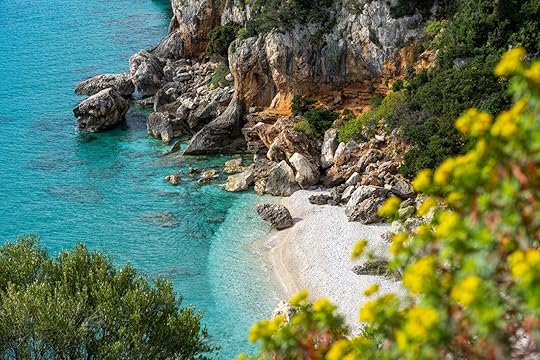
Photo: Frank Lambert/Shutterstock
Sardinia, the Mediterranean’s second-largest island and an autonomous Italian region, is world-famous for its stretches of fine sand reminiscent the Caribbean. The northern Costa Smeralda, well-known for its clear waters and luxury marinas (and celebrity visitors), contrasts with the southern coasts around Costa Rei and Costa del Sud, which are less glitzy and more accessible from Cagliari, the island’s capital. Getting here will involve flying into mainland Italy, followed by connections to Sardinian airports in Cagliari, Alghero, or Olbia. Or, if you have the means, you can rent a megayacht and cruise on into the millionaire’s playground of Smeralda.
3-bedroom cottage with views of the sea and mountains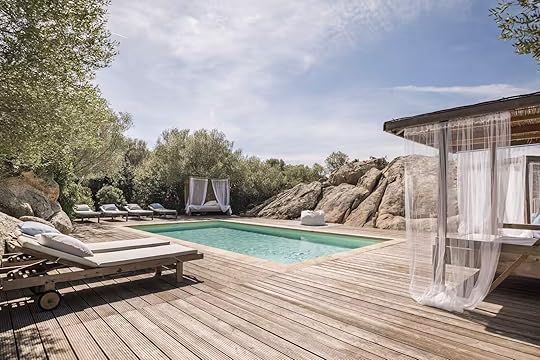 Photo: Airbnb
Photo: Airbnb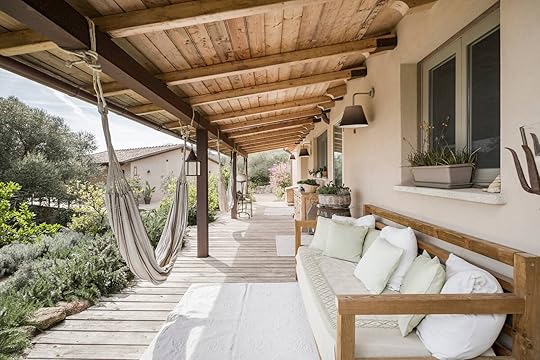 Photo: Airbnb
Photo: Airbnb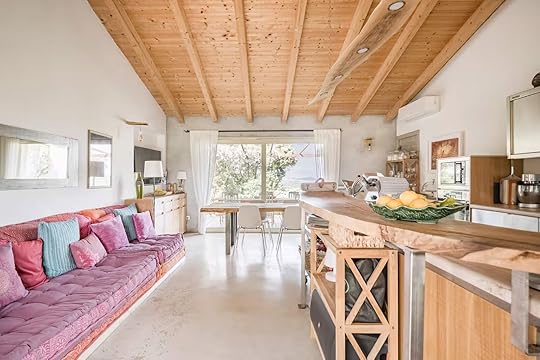 Photo: Airbnb
Photo: Airbnb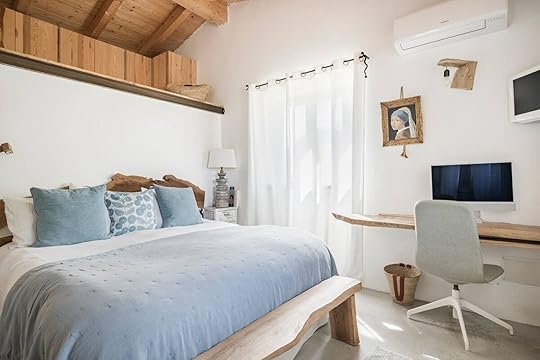 Photo: AirbnbSee more photos
Photo: AirbnbSee more photosYou’ll want to be close to the Emerald Coast on Sardinia, and luckily, many of the Guest Favorite Airbnbs tick that box. This three-bedroom cottage is named “S’ispantu,” which means “wonder” in Sardinian. It’s within a nature refuge and is surrounded by breathtaking views of the sea and mountains. The rural property is only ten minutes from the amenities of Arzachena, but it feels like a world away. The interior is light and airy with olive wood furnishings, and there are three panoramic terraces, two pools surrounded by rocks, and a Jacuzzi. Or, if you’d rather be on the waterfront, check out this three-bedroom seaside home in one of the most beautiful spots of Santa Teresa Gallura, overlooking the Strait of Bonifacio.
Six guests, three bedrooms
Price: $746 per night
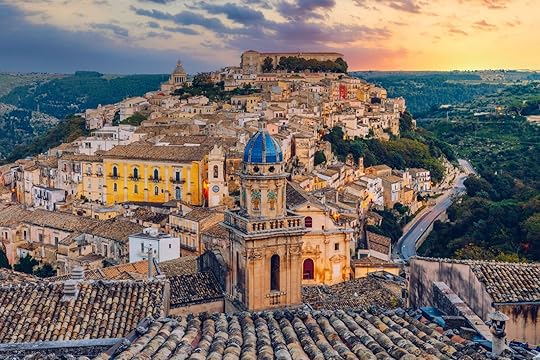
Photo: DaLiu/Shutterstock
Off the toe of Italy’s boot, Sicily is one of the most naturally beautiful regions of the country and one of the most culturally diverse places in Europe. The island’s architecture, language, cuisine, and cultural traditions have been influenced by many civilizations over the centuries, including the Phoenicians, Greeks, Arabs, Normans, Romans, and British. Sicily is — to put it simply — a very special place. From world-class vineyards built on volcanic soil and pretty fishing villages, which are still traditionally operated, to seasonal farm-to-table restaurants, there’s a lot to enjoy on vacation here.
Country boutique villa with 360-degree views over the island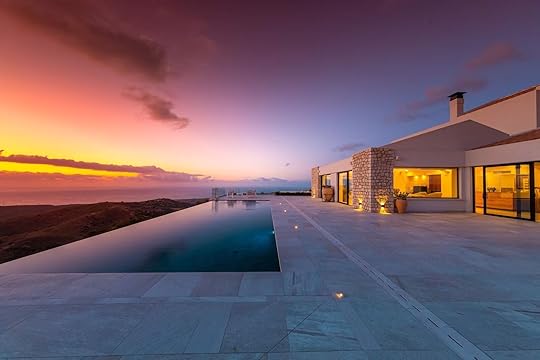 Photo: Airbnb
Photo: Airbnb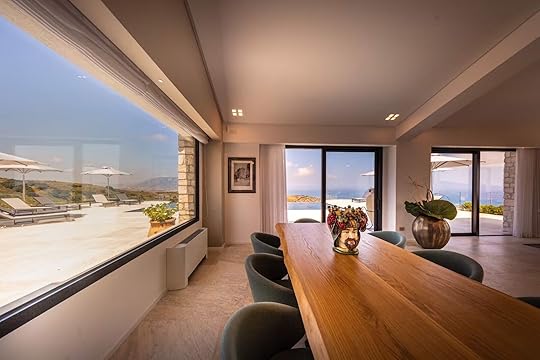 Photo: Airbnb
Photo: Airbnb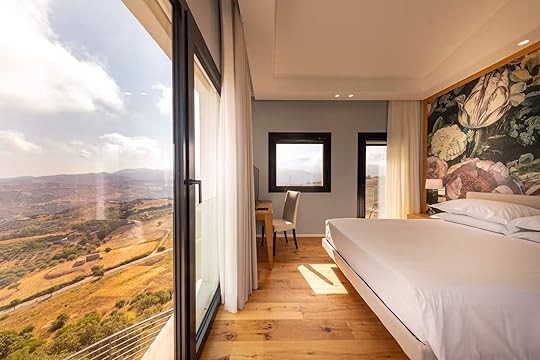 Photo: Airbnb
Photo: Airbnb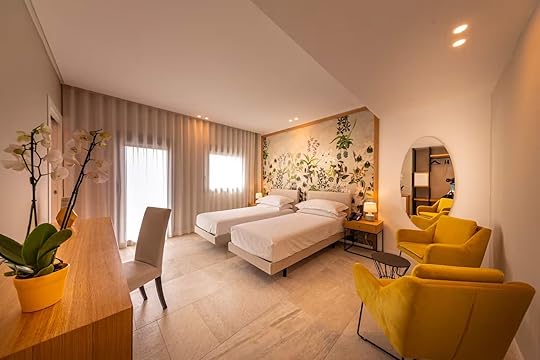 Photo: AirbnbSee more photos
Photo: AirbnbSee more photosFor Sicily, you might think you must choose between the city, the countryside, or the beach. But in my experience, you should do them all. Especially if you’ve flown from the US and are unlikely to return to the island, you need to experience everything. Remember, Sicily is not huge; you can easily do a week-long road trip. The coast will blow your mind, but so will the capital of Palermo (especially if you’re a foodie).
So consider starting in the city, and for that, please, for the love of arancini, choose an Airbnb with character. This particularly special rental is situated in the Politeama Libertà district of Palermo. Close to many of Palermo’s most popular attractions, such as the Teatro Massimo and the Palazzo dei Normanni, this area of the city is also home to some of the best shopping, dining, and entertainment options. The sensational Airbnb is located on the second floor of an Art Nouveau building. The entire apartment has been renovated, maintaining the Art-Nouveau style of the exterior. No detail has been overlooked here, and it’s clear this space has been curated with love by an artist and book lover. Iconic Sicilian tiled floors can be found throughout, and design-focused furniture, stacks of books, and pretty terraces make this one of the most impressive Airbnbs in Palermo.
For a coastal stay, this boutique villa (pictured above) is one to bookmark. The six-bedroom top five-percent Airbnb offers 360-degree views over the countryside, mountains, and ocean. It’s a prime spot for taking in the dramatic pink Sicilian sunsets and is surrounded by meadows of native flowers and ancient olive trees.
12 guests, six bedrooms
Price: $947 per night
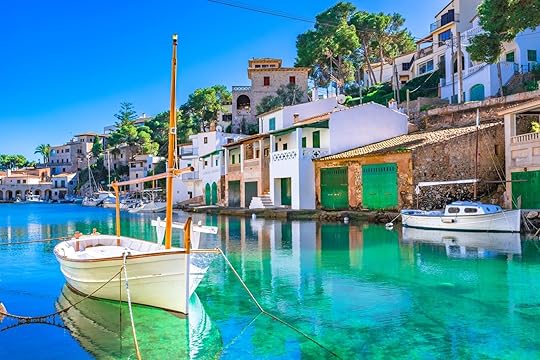
Photo: vulcano/Shutterstock
Spain’s Balearic Islands have been tarnished with the reputation of being the most sought-after party capitals in the world. It’s an undeniable part of the culture. But if that is not your scene, then don’t let it put you off. Like any destination, you can dip into cultural activities, and if you want to avoid the sunburned day drinking Brits you can. And it’s really not that difficult. On Mallorca, just steer clear of Magaluf. There are many ways to enjoy the island responsibly. Mallorca’s many quiet corners offer a far more authentic taste of the lifestyle. If you are willing to scratch beneath the surface, you will enjoy not only the sun, sea, and sand but also one of the region’s most beautiful and culturally rich islands.
Charming manor in the heart of Deià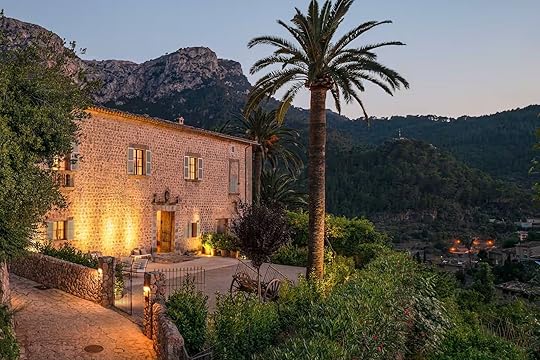 Photo: Airbnb
Photo: Airbnb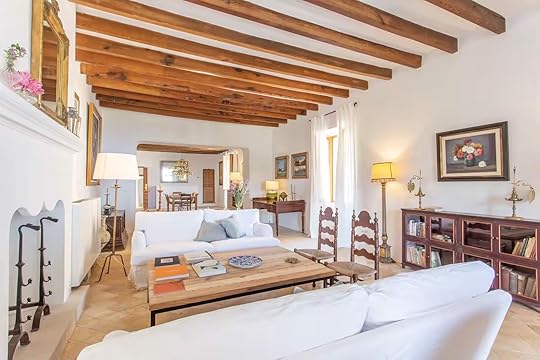 Photo: Airbnb
Photo: Airbnb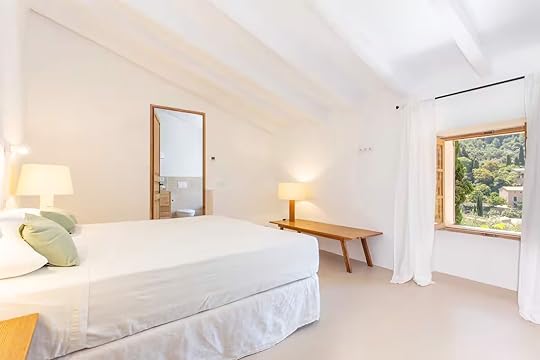 Photo: Airbnb
Photo: Airbnb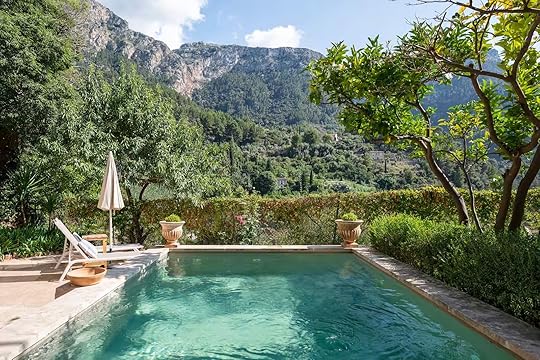 Photo: AirbnbSee more photos
Photo: AirbnbSee more photosThroughout my suggestions on where to stay, I’ve harped on about why you should opt for a rental away from tourist areas, and I’m repeating myself because, for the Balearic Islands, this will make or break your vacation. Having a baller pad where you can retreat away and lounge by a pool in privacy, cook feasts from local produce, and take in the sunsets with a cold beer that doesn’t cost over ten euros is heaven on earth. For groups, check out this top one percent four-bedroom property in the heart of Deià, one of Mallorca’s most picturesque and charming villages. This prime location allows a leisurely two-minute walk to the town center and nearly all of Deià’s restaurants. The manor house was built in 1618 and features Late Renaissance and Italian Mannerist architecture. It overlooks the oldest part of the village, with the Mediterranean Sea as its stunning backdrop. Another group option is this renovated early-1900s farm-style three-bedroom house in the Sóller Valley. Traditional accents have been retained, but the conversion is outstanding, with top-notch appliances and a pool surrounded by a gorgeous garden.
Eight guests, four bedrooms
Price: $898 per night
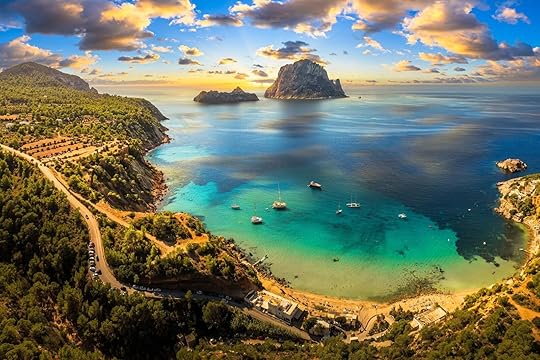
Photo: Balate.Dorin/Shutterstock
Much like Mallorca, Ibiza has hedonism, laid-back pretty villages, and hidden coves in equal measure. You can dance until the sun comes up (or mid-day) at beach clubs, or hide away in the White Isle’s hippy retreats, simply relax on out-of-the-way dream beaches, or in the island’s interior of fragrant pines, ancient olive trees, and sleepy whitewashed towns.
Bohemian-chic villa near Cala Conta beach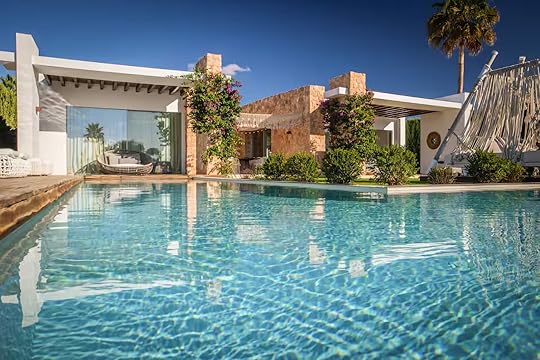 Photo: Airbnb
Photo: Airbnb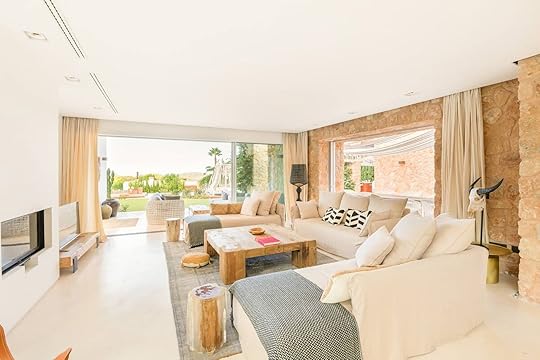 Photo: Airbnb
Photo: Airbnb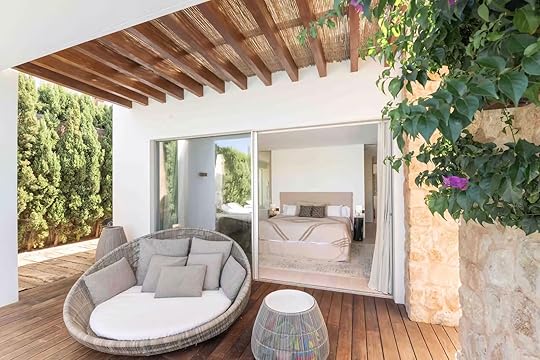 Photo: Airbnb
Photo: Airbnb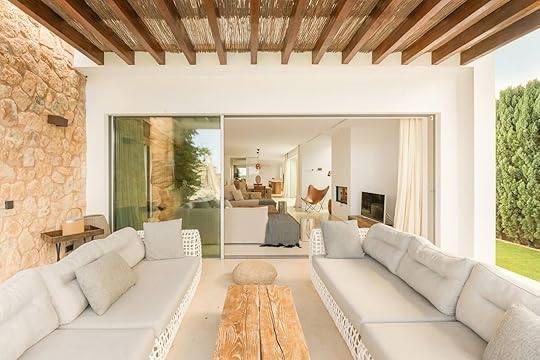 Photo: AirbnbSee more photos
Photo: AirbnbSee more photosIt’s equally important to have a grand abode in Ibiza. If you’re going to “do” Ibiza, you should do so in style. This bohemian-chic four-bedroom villa is in Sant Josep de sa Talaia, a beautiful village in the west of Ibiza, in the foothills of Sa Talaia. It’s part of a gated community with a gym and spa for guest use. Within a ten-minute stroll, you’ll reach Cala Conta beach with its crystal clear azure blue water, where you can dine at the famous restaurant Sunset Ashram. For couples or solo travelers, this one-bedroom casita in Cala de Sant Vicent in the northeast of Ibiza is a great find. With its sweeping bay, golden sands, and crystal-clear waters, Cala de Sant Vicent is ideal for families, couples, and anyone looking for a more serene Ibiza experience. The casita has its own entrance and terrace, and there’s a communal pool, outdoor bar, BBQ, and dining pergola for socializing. 
Eight guests, four bedrooms
Price: $894 per night
Matador Network's Blog
- Matador Network's profile
- 6 followers



